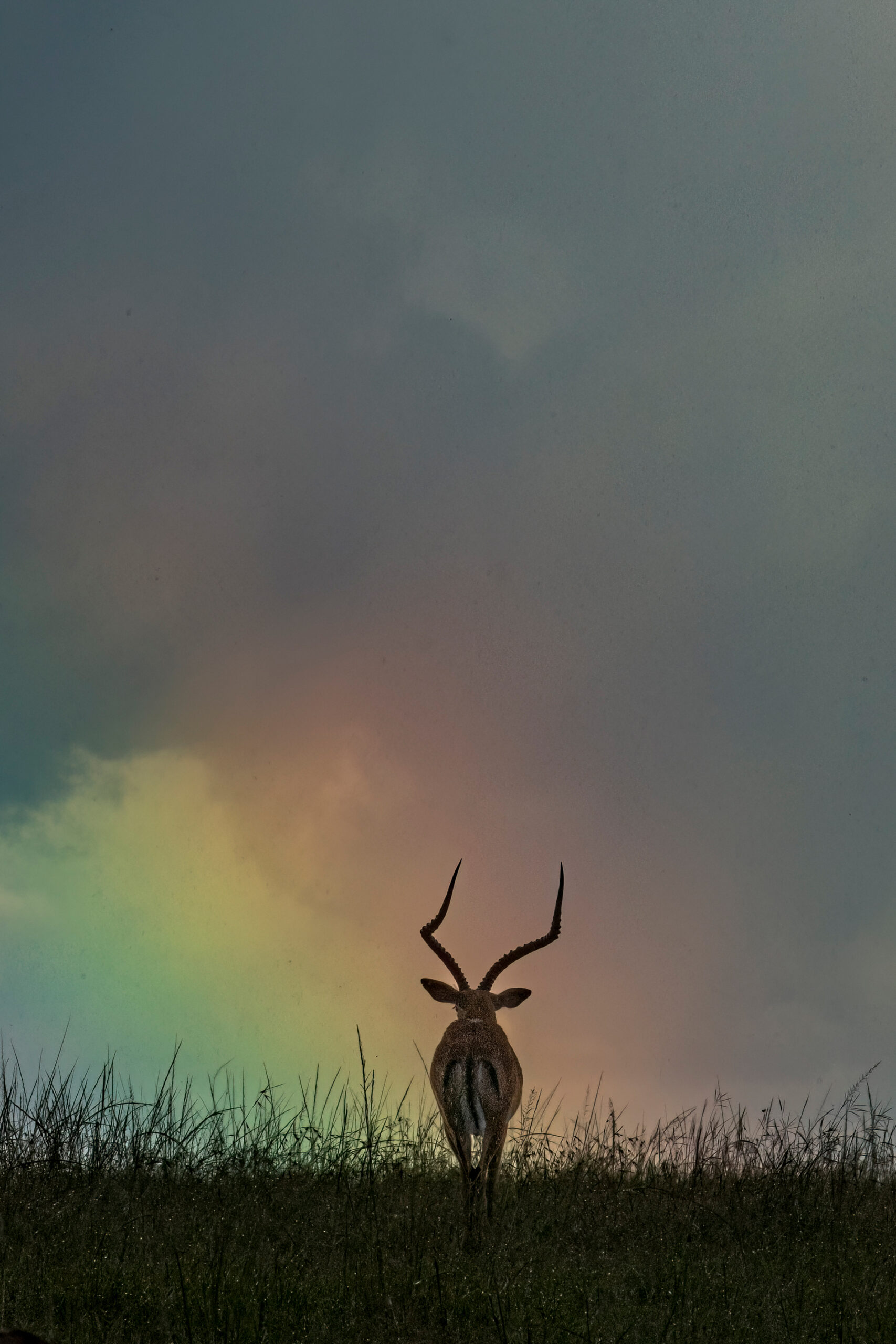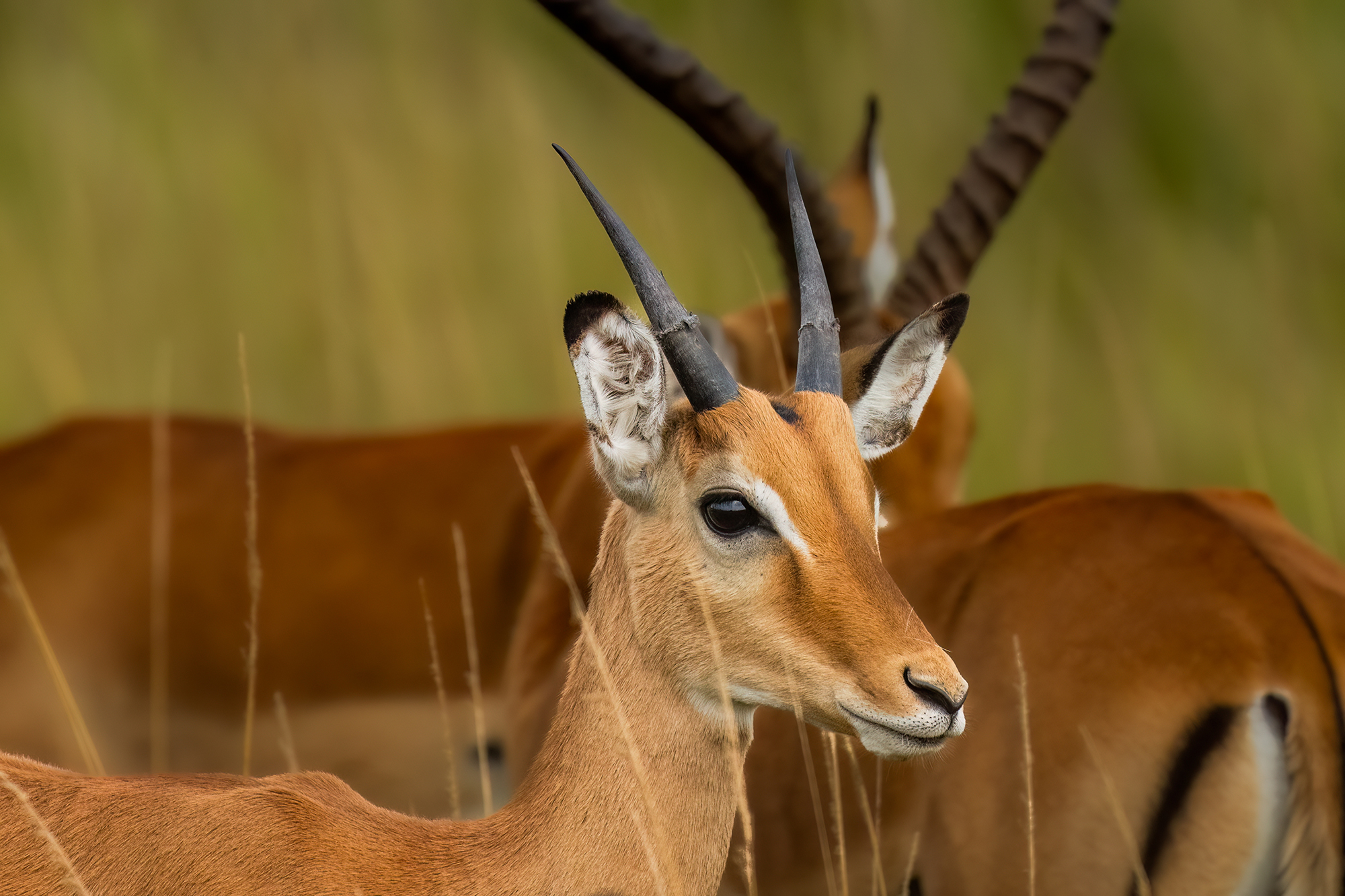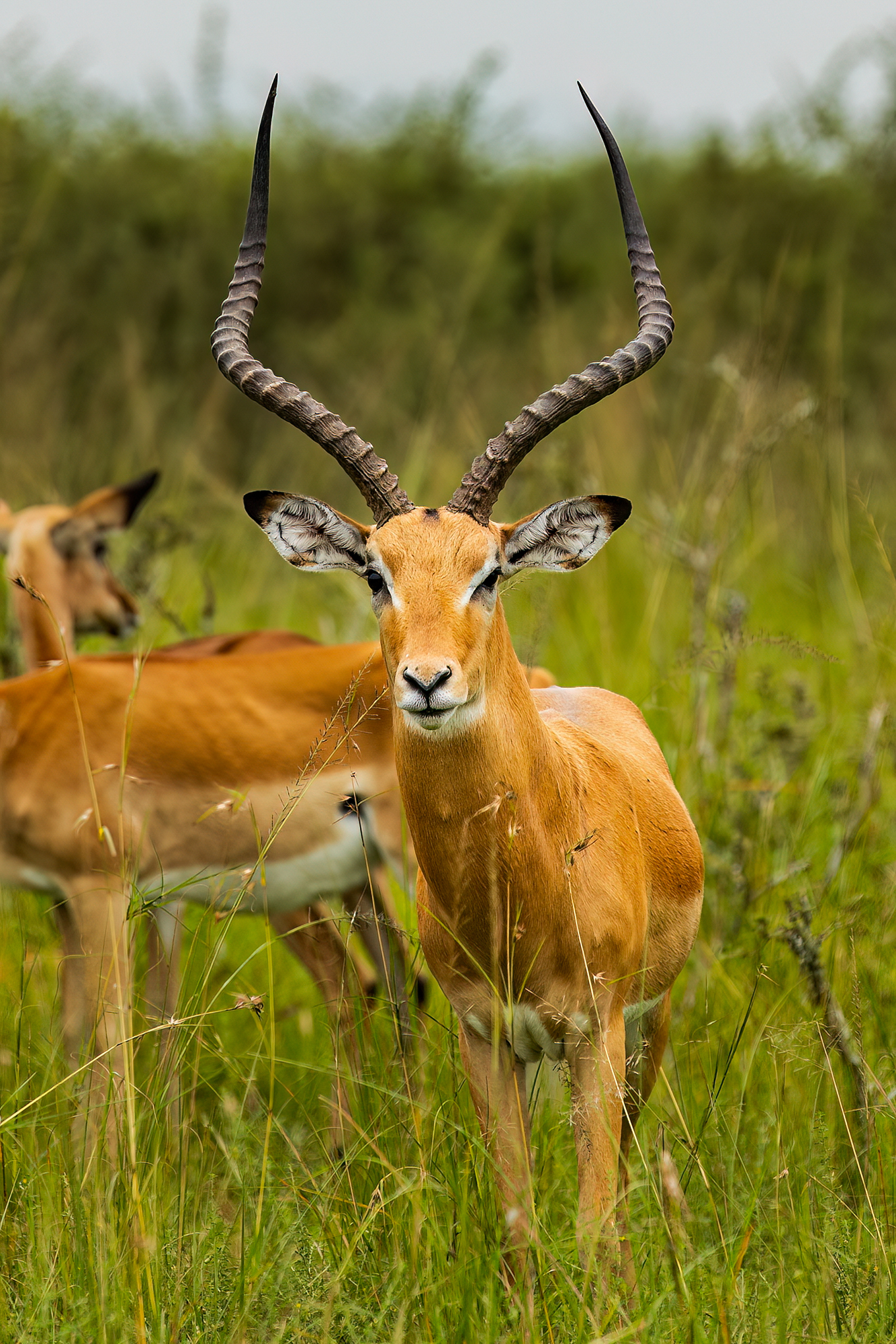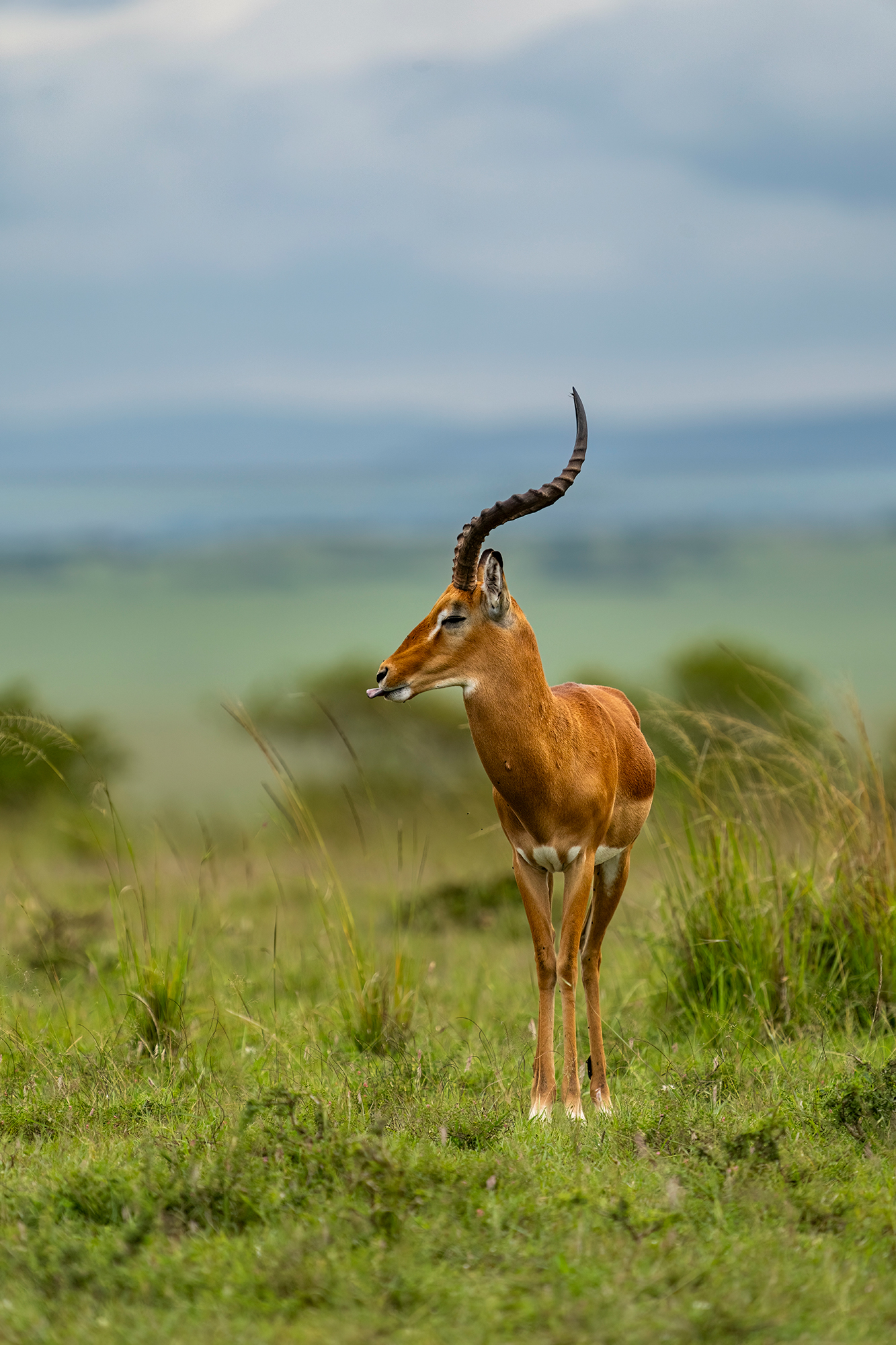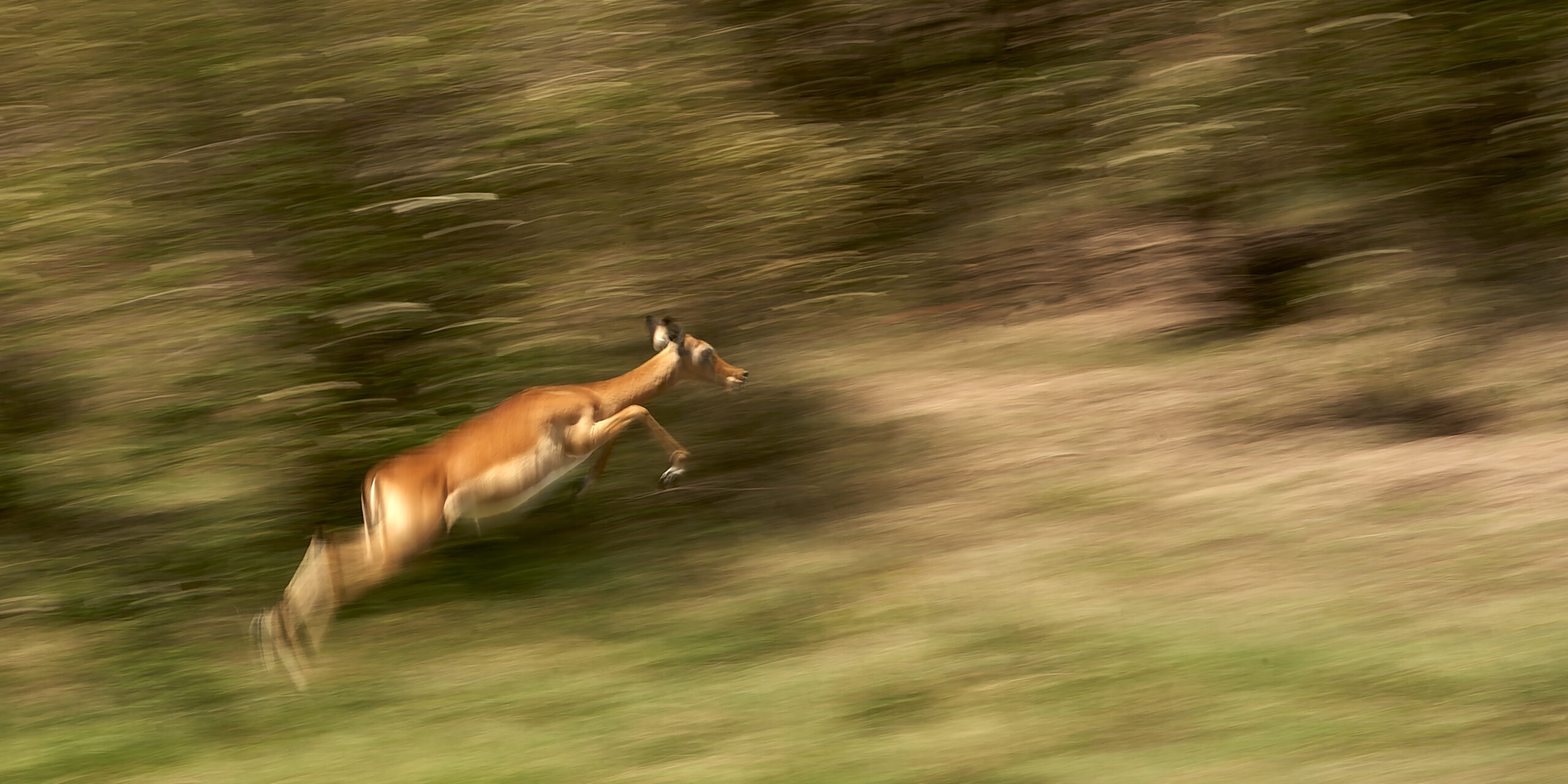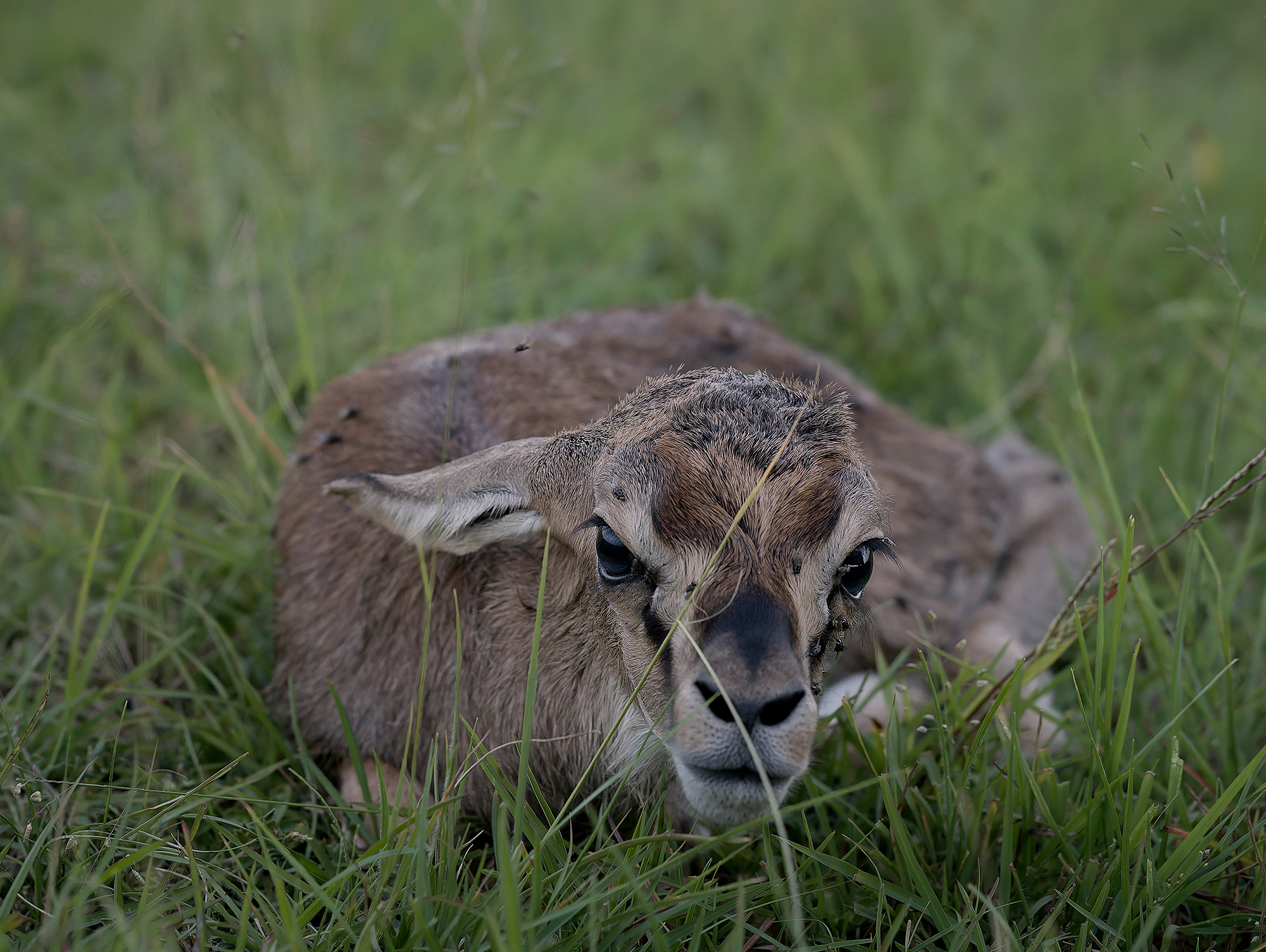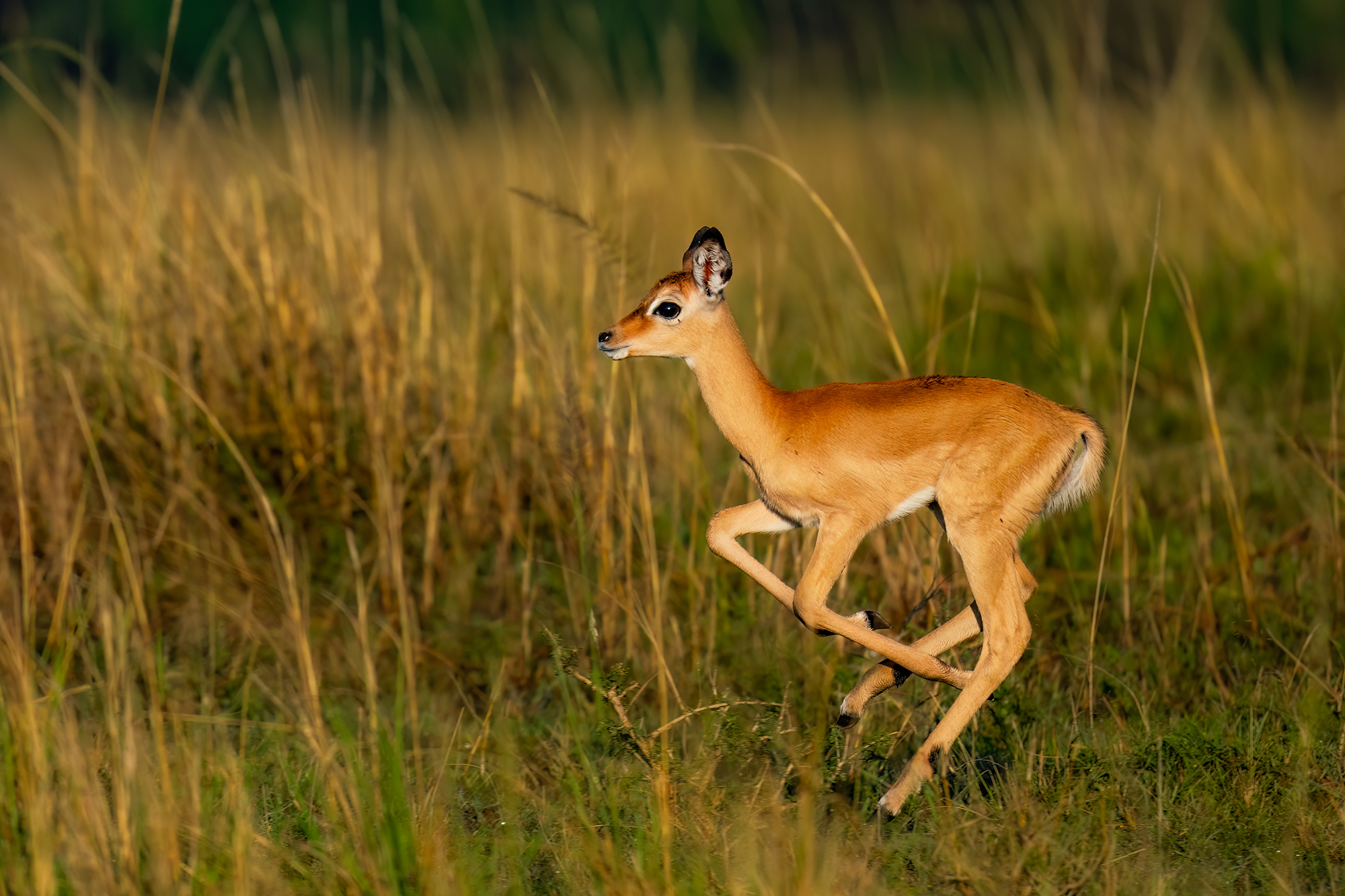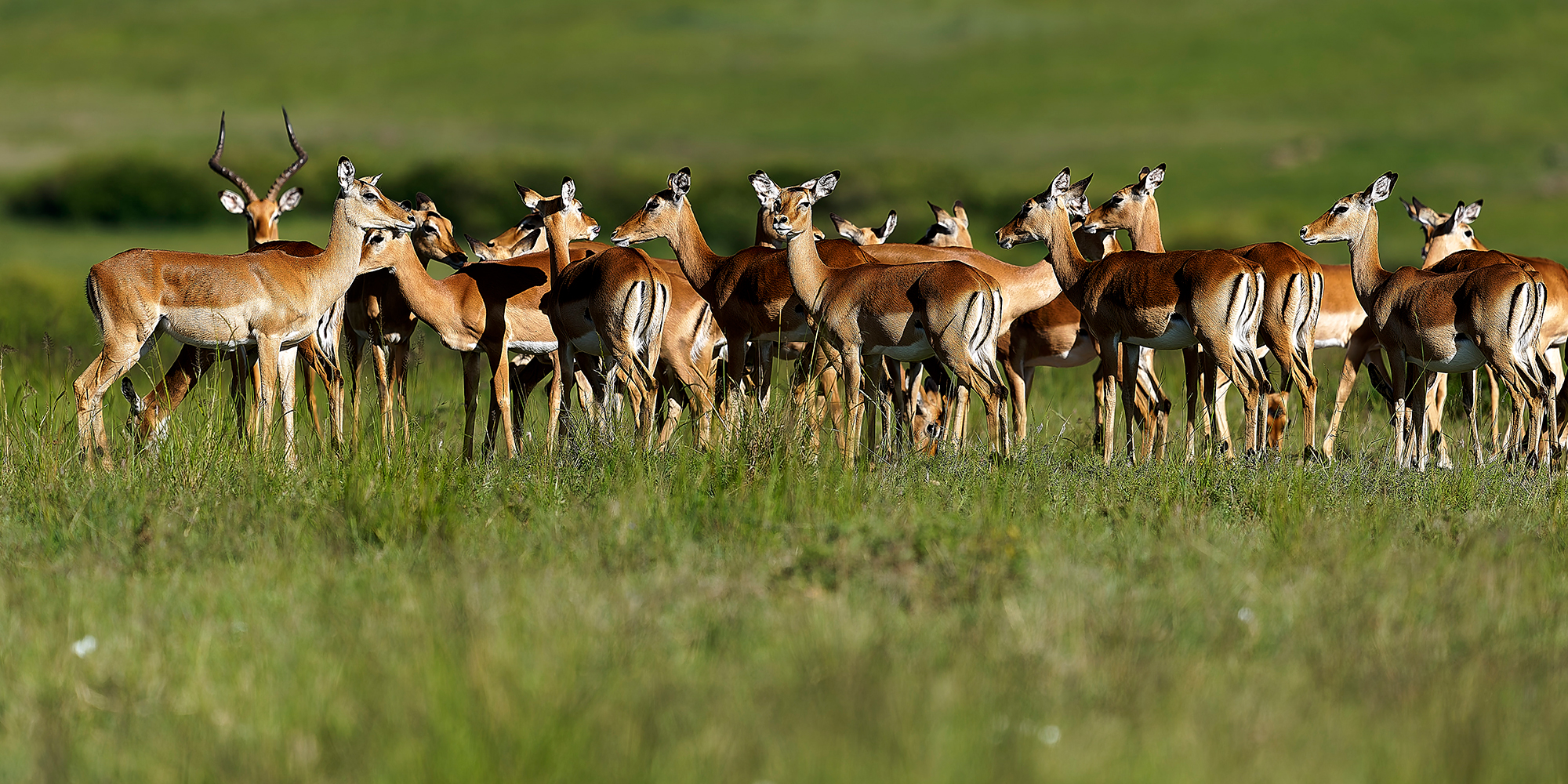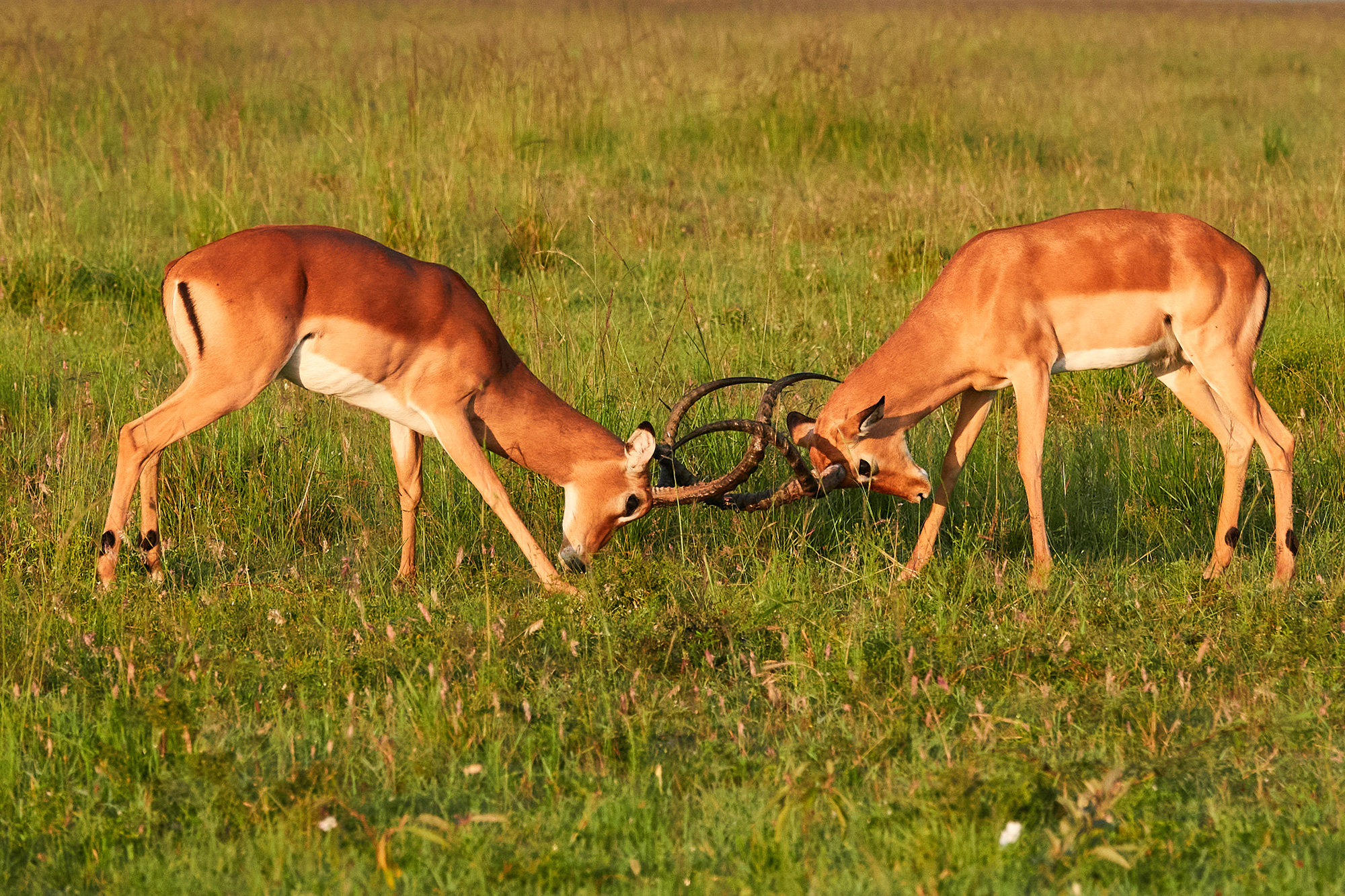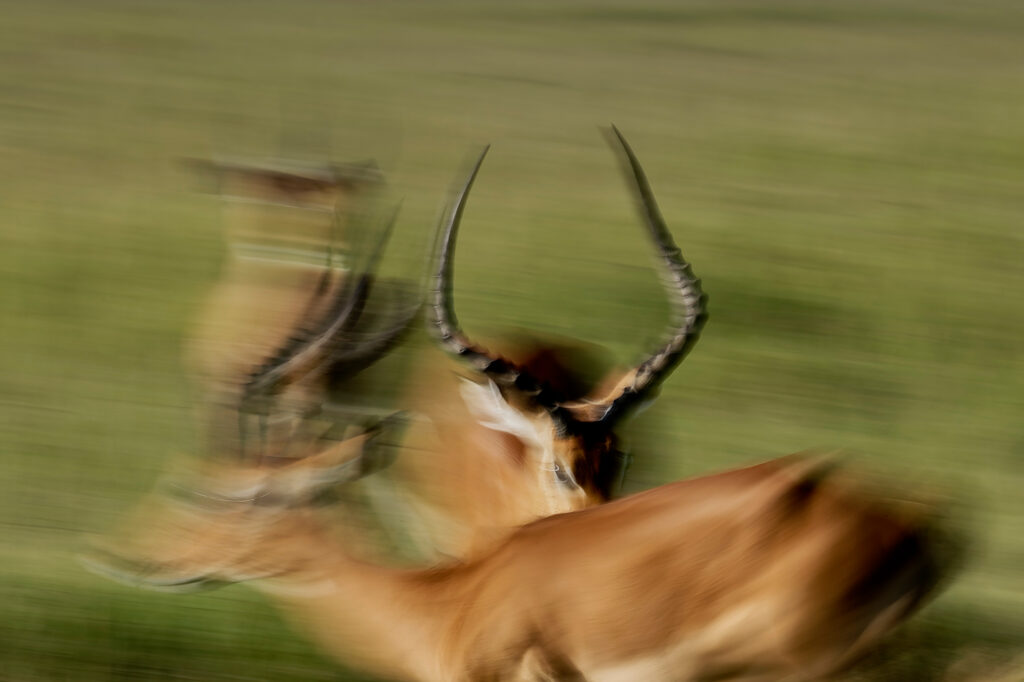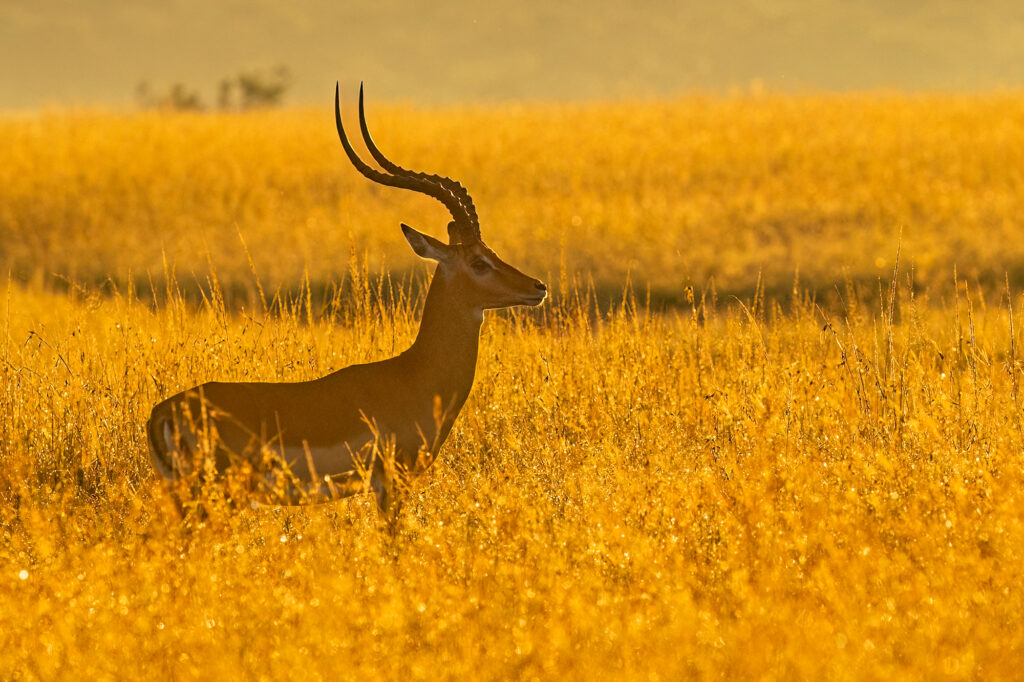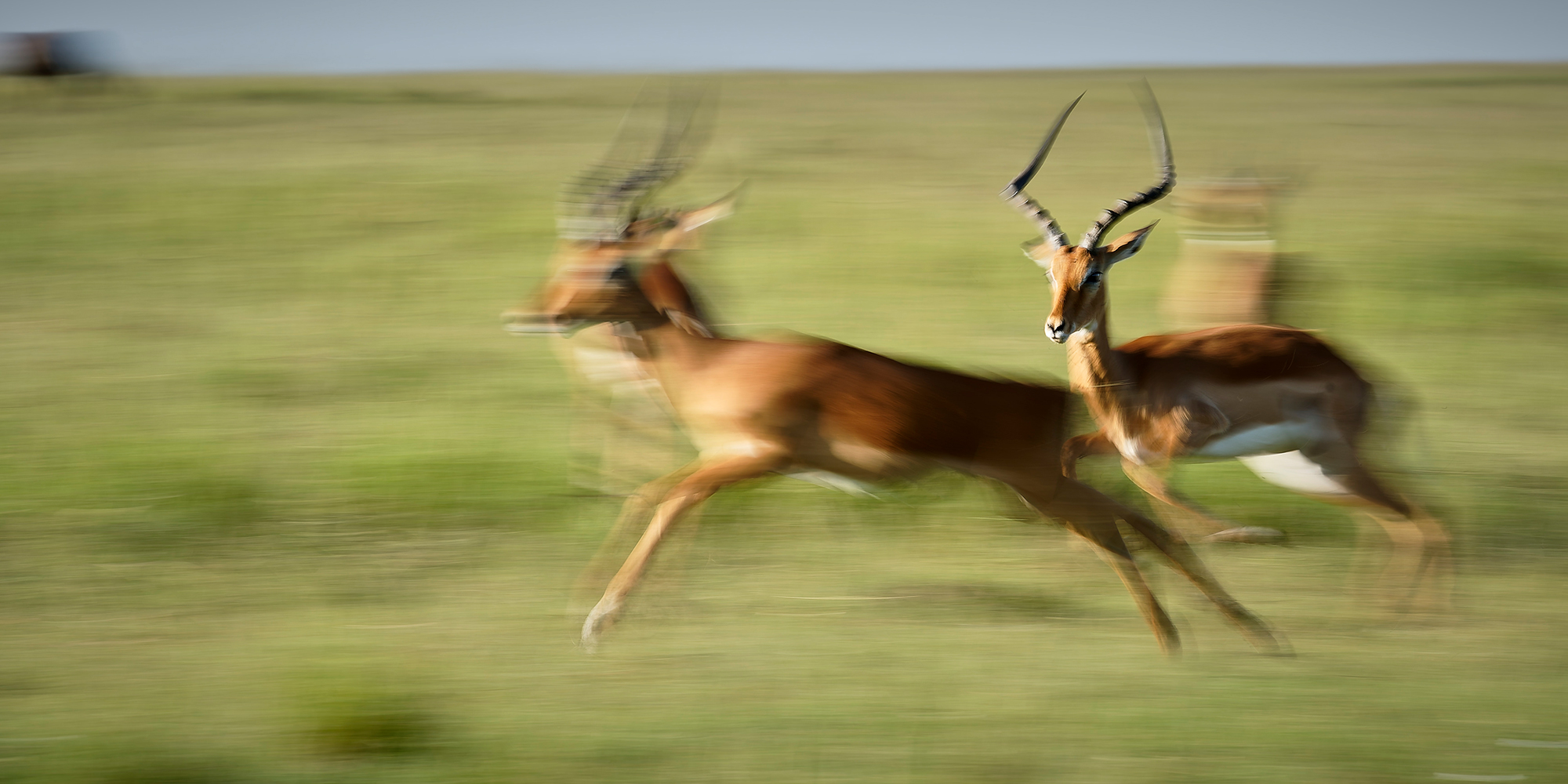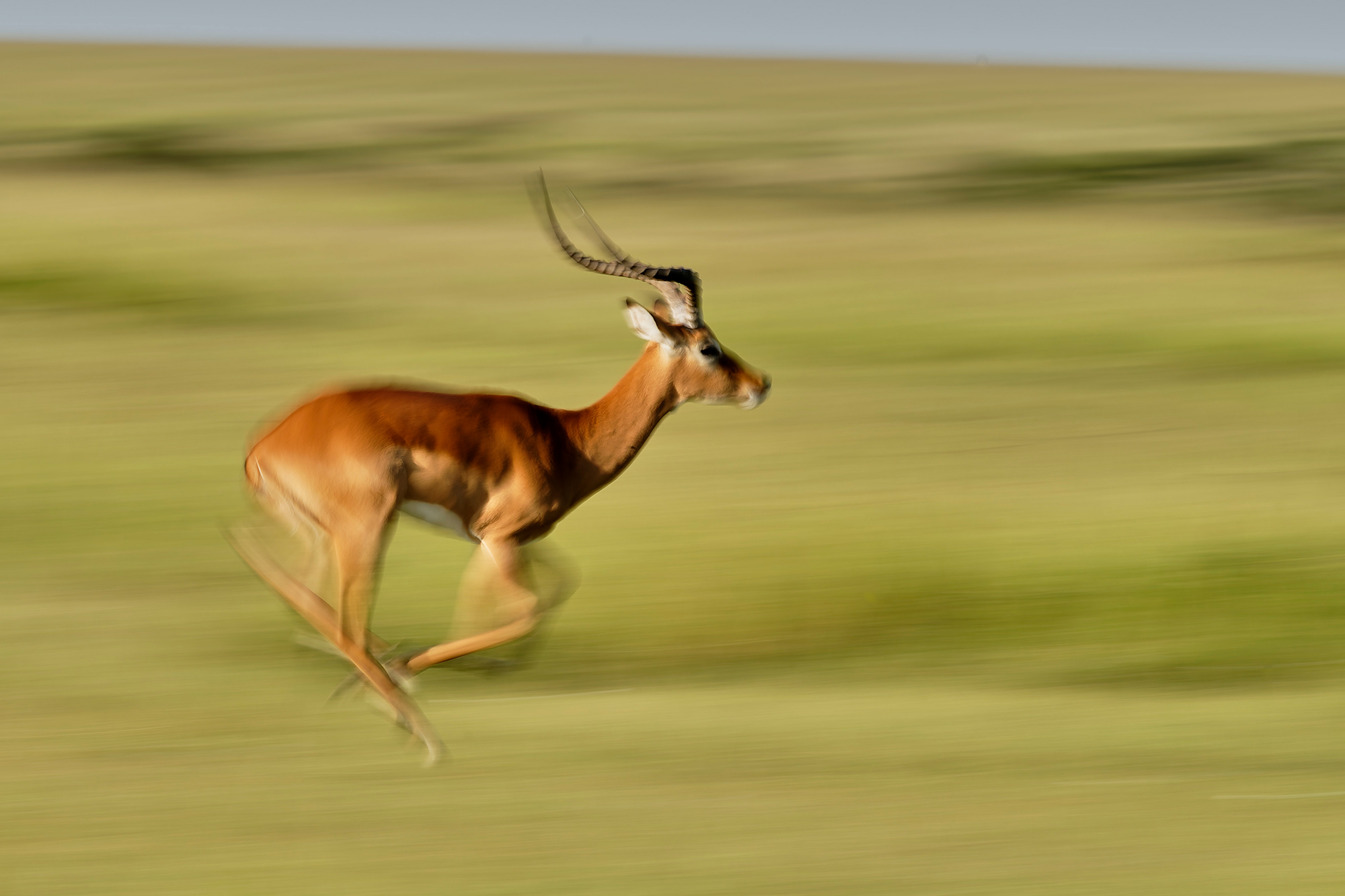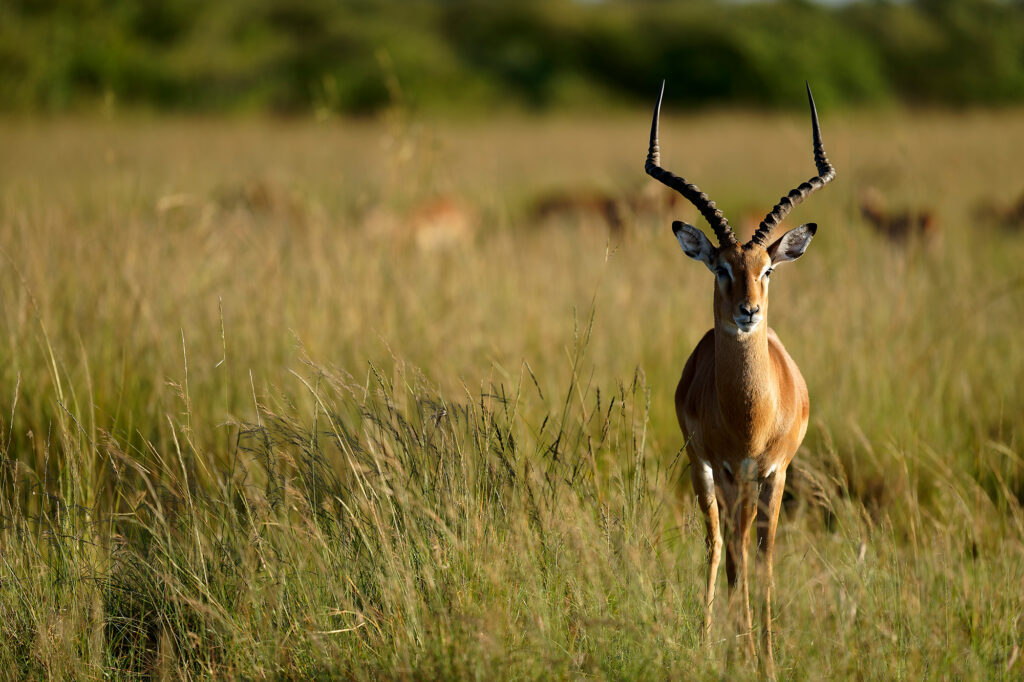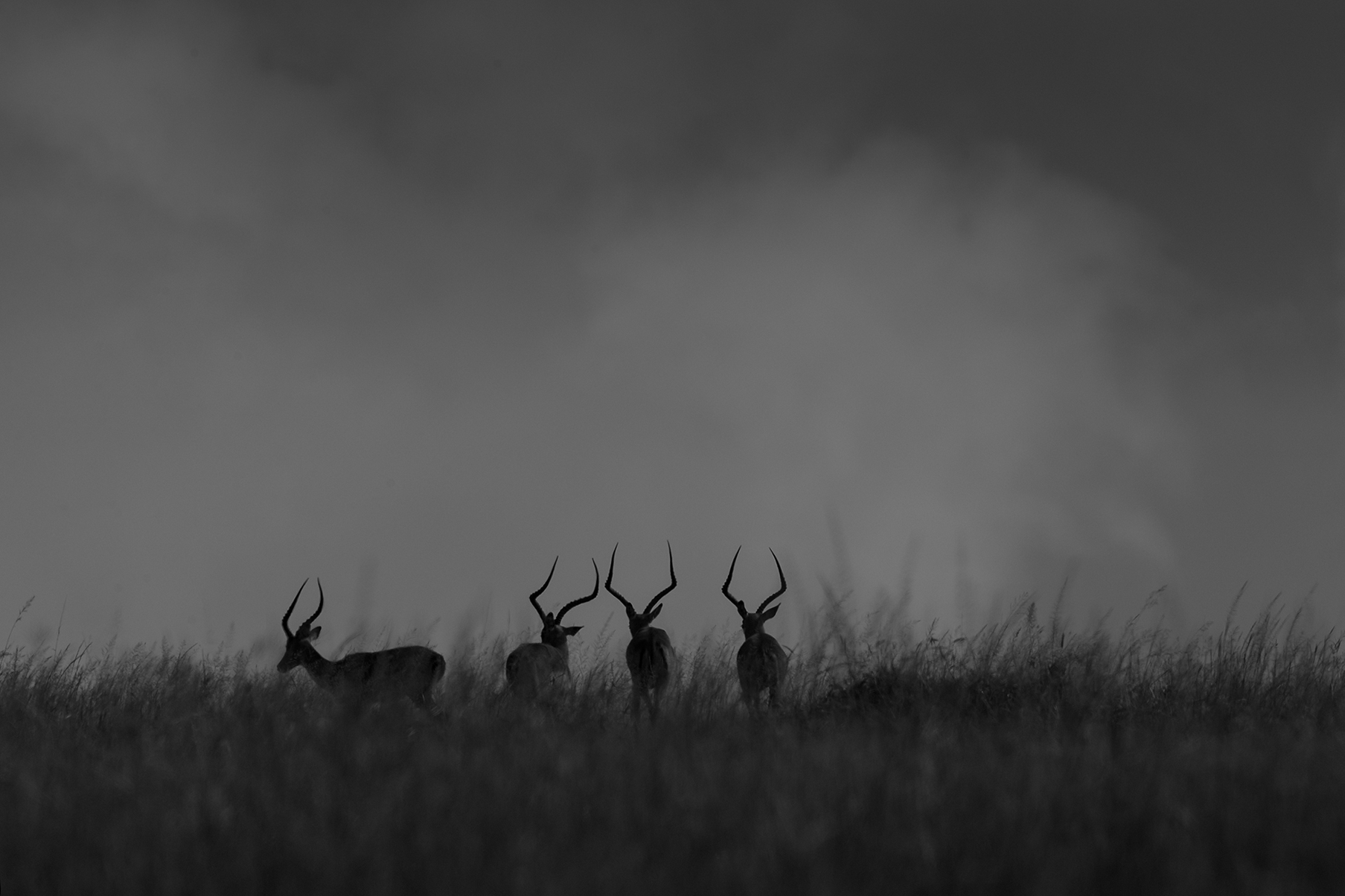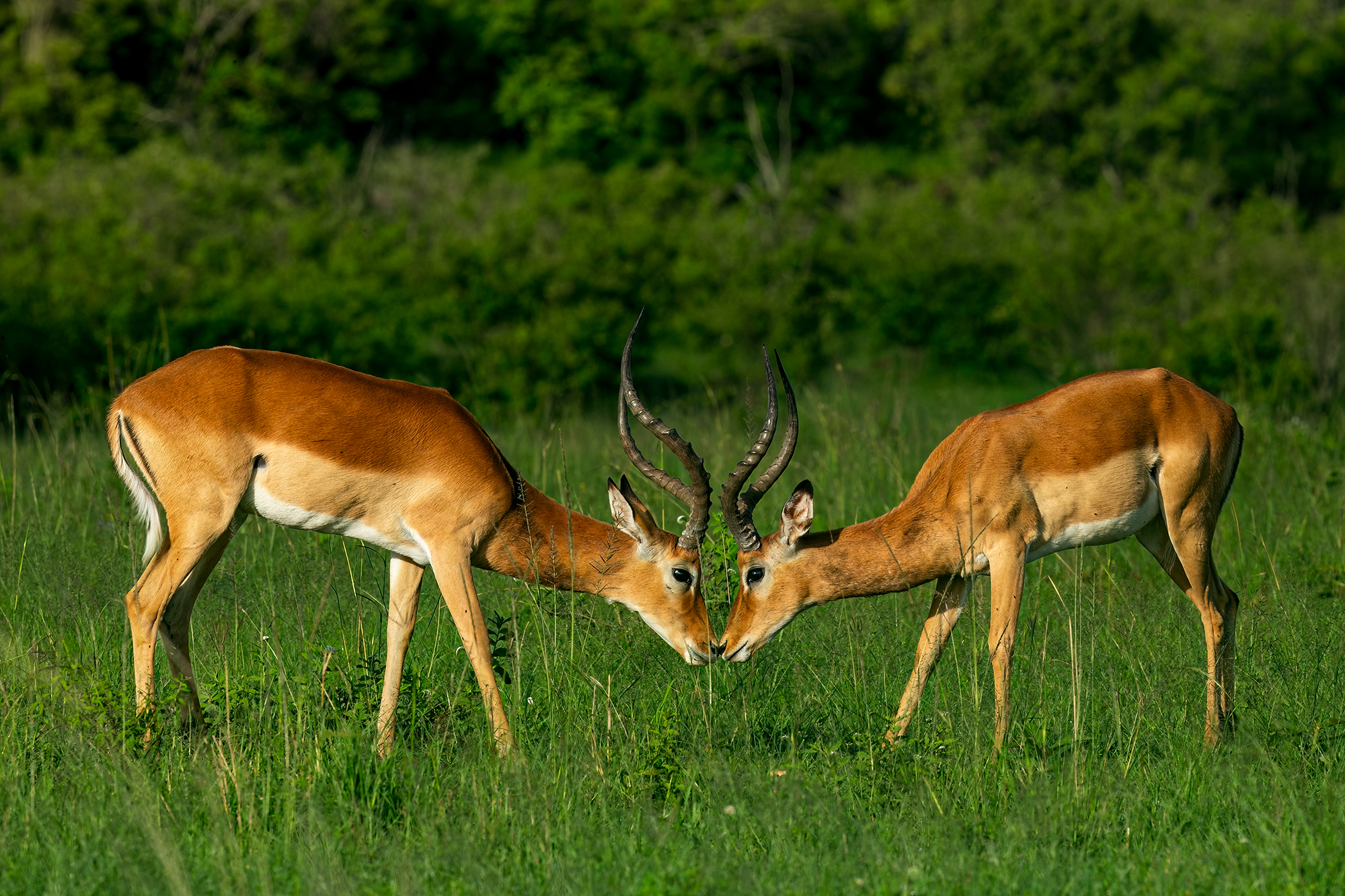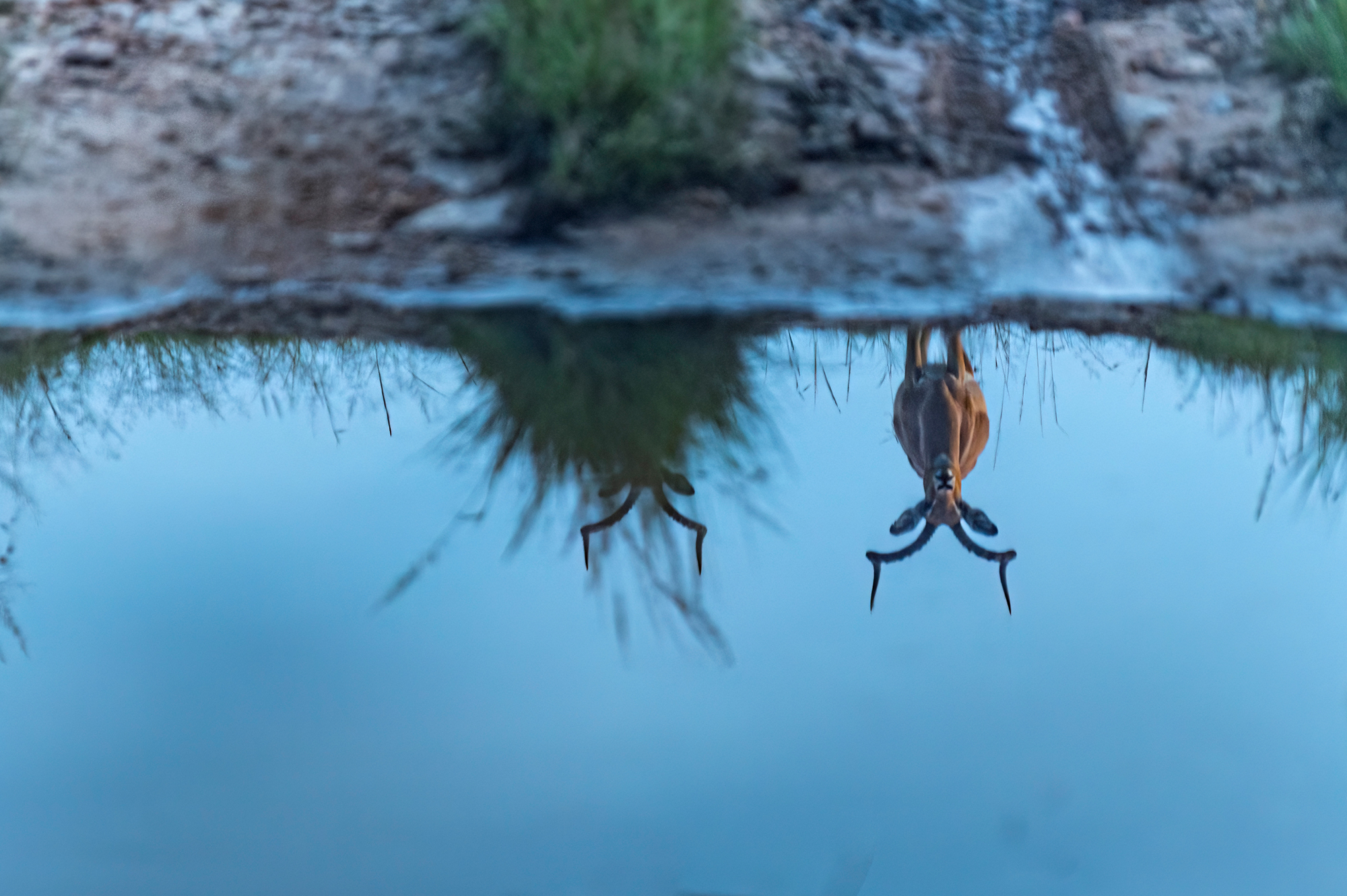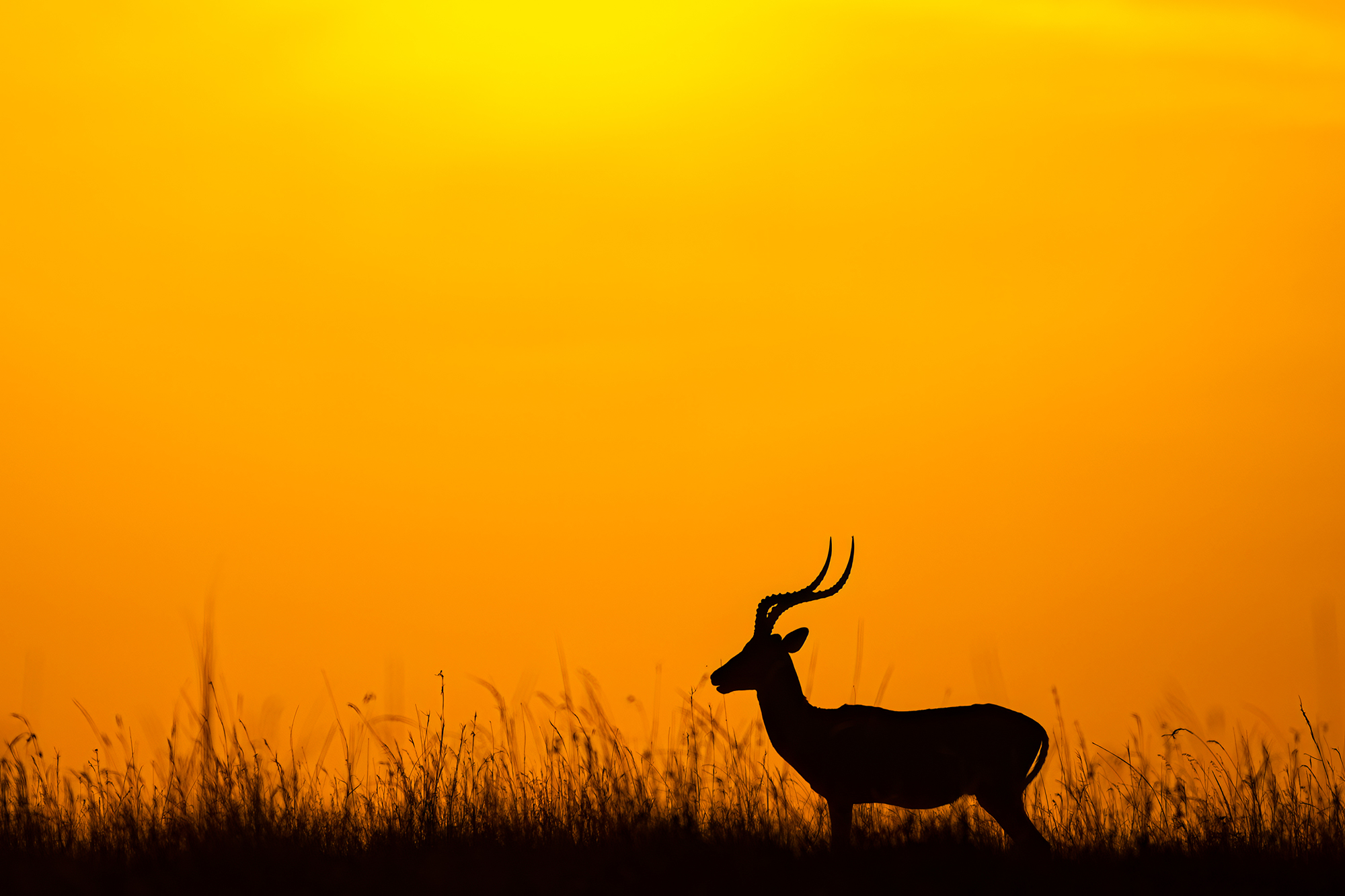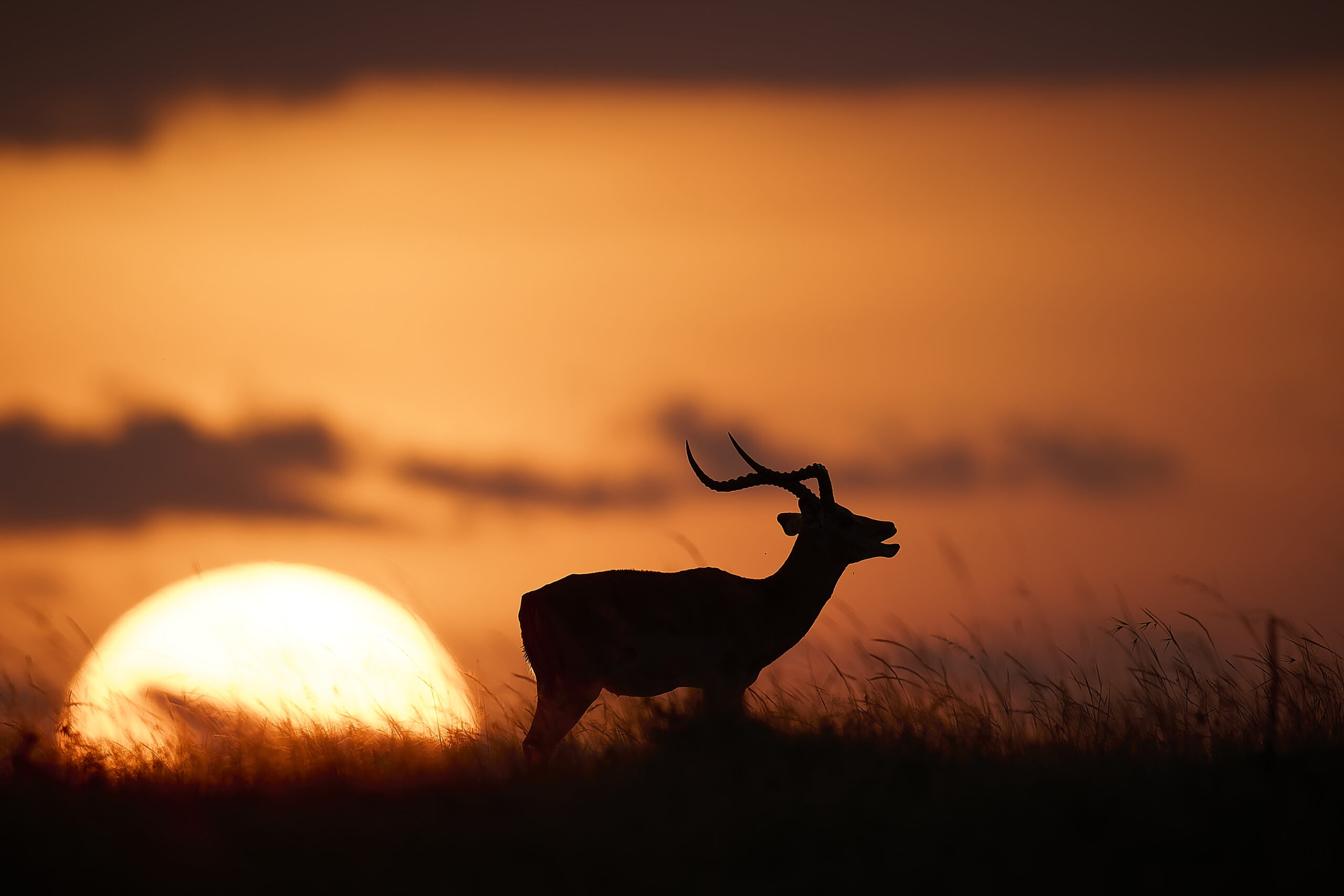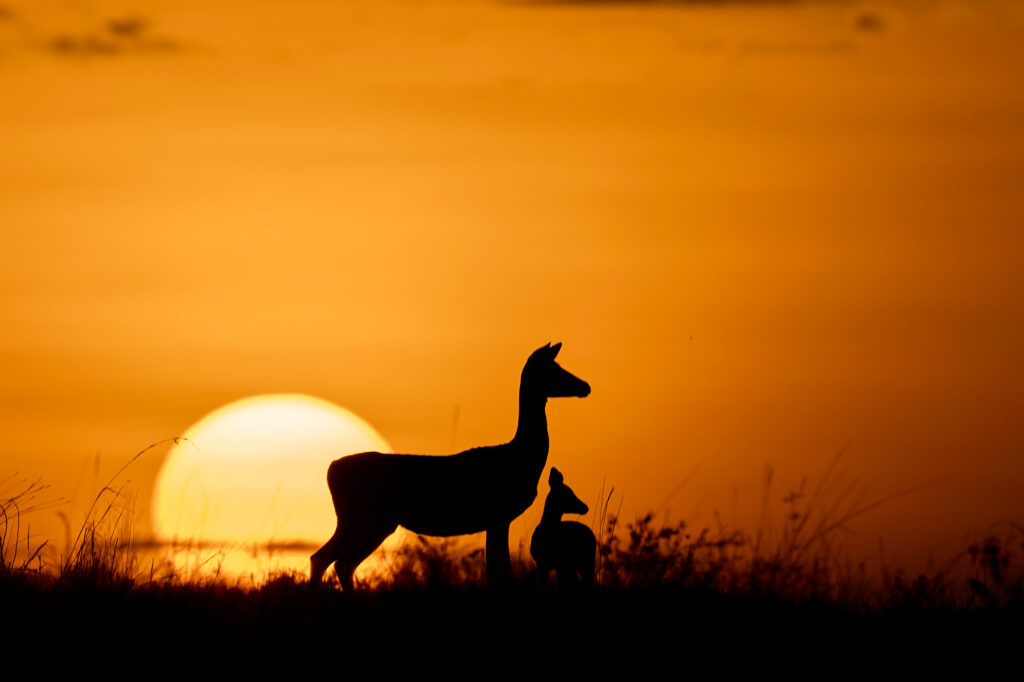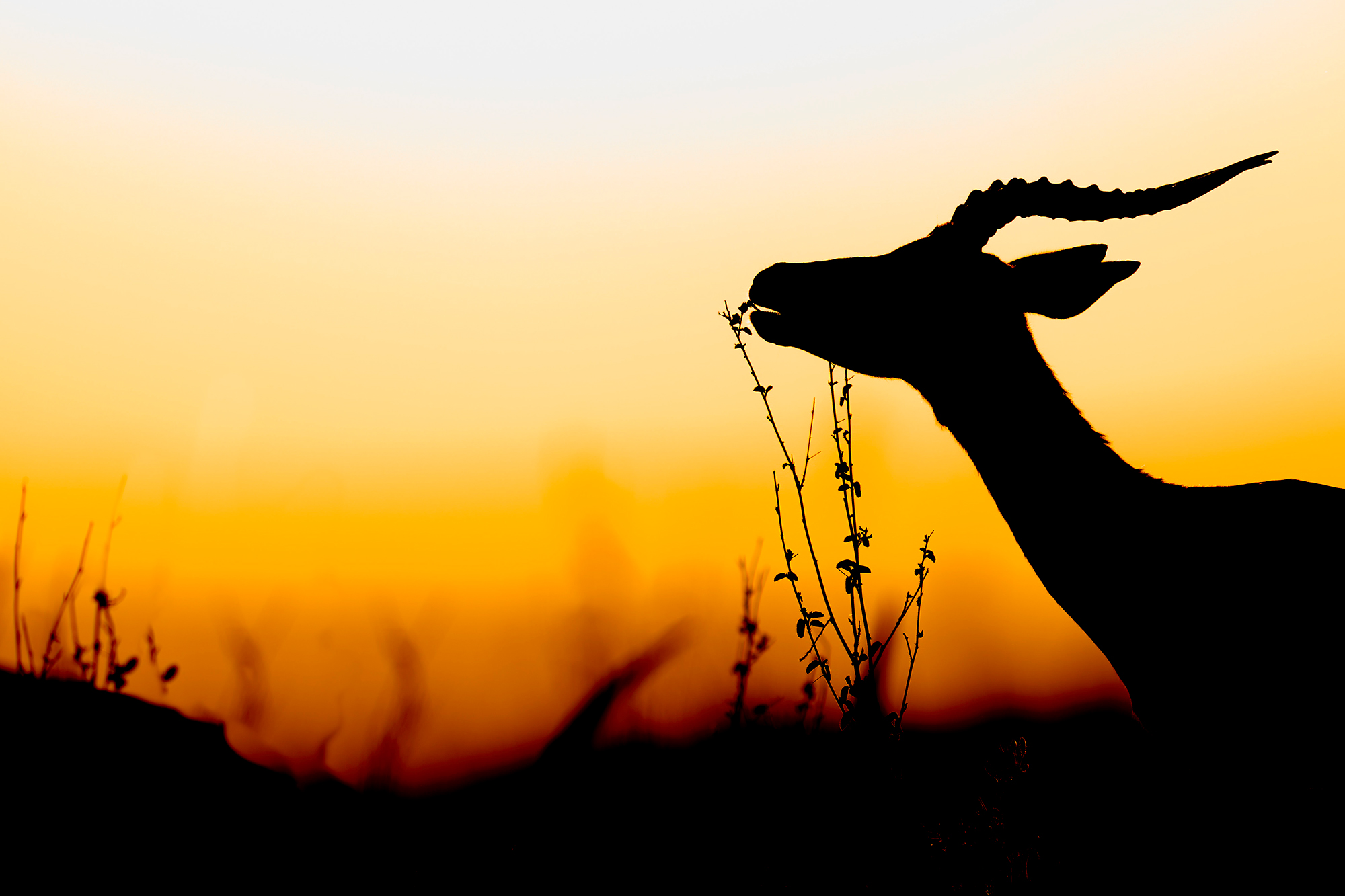
When you come to Africa on safari there is a tendency for photographers to ignore the abundant herbivores and to simply drive past the herds of Impala (Aepyceros melampus). They are a species living on the edge, a species that frequents edge habitats where they can be close to grass and yet can get access to woodlands for both food and to escape predators but a very graceful and interesting species.
Your guide may also dismiss them as “predator food” in the belief that you are only interested in the big predators and the big herbivores. The rear end of the impala has a very distinctive black “M” mark, up the legs and down to the tail which is reminiscent of the golden arches, so there is a joke in Africa that the impala are the “fast food”, the “McDonalds” of the African savannah. I am going to ask you to not dismiss these graceful animals but to stop, watch their fascinating social life, work out what they are doing and then get some good photographs of these truly elegant creatures. It is true that herbivores of this size inevitably die from predation as opposed to other causes like disease or starvation, but their social life is interesting and easy to watch. I really like to photograph interactions as opposed to portraits and there are many opportunities amongst these elegant impala.
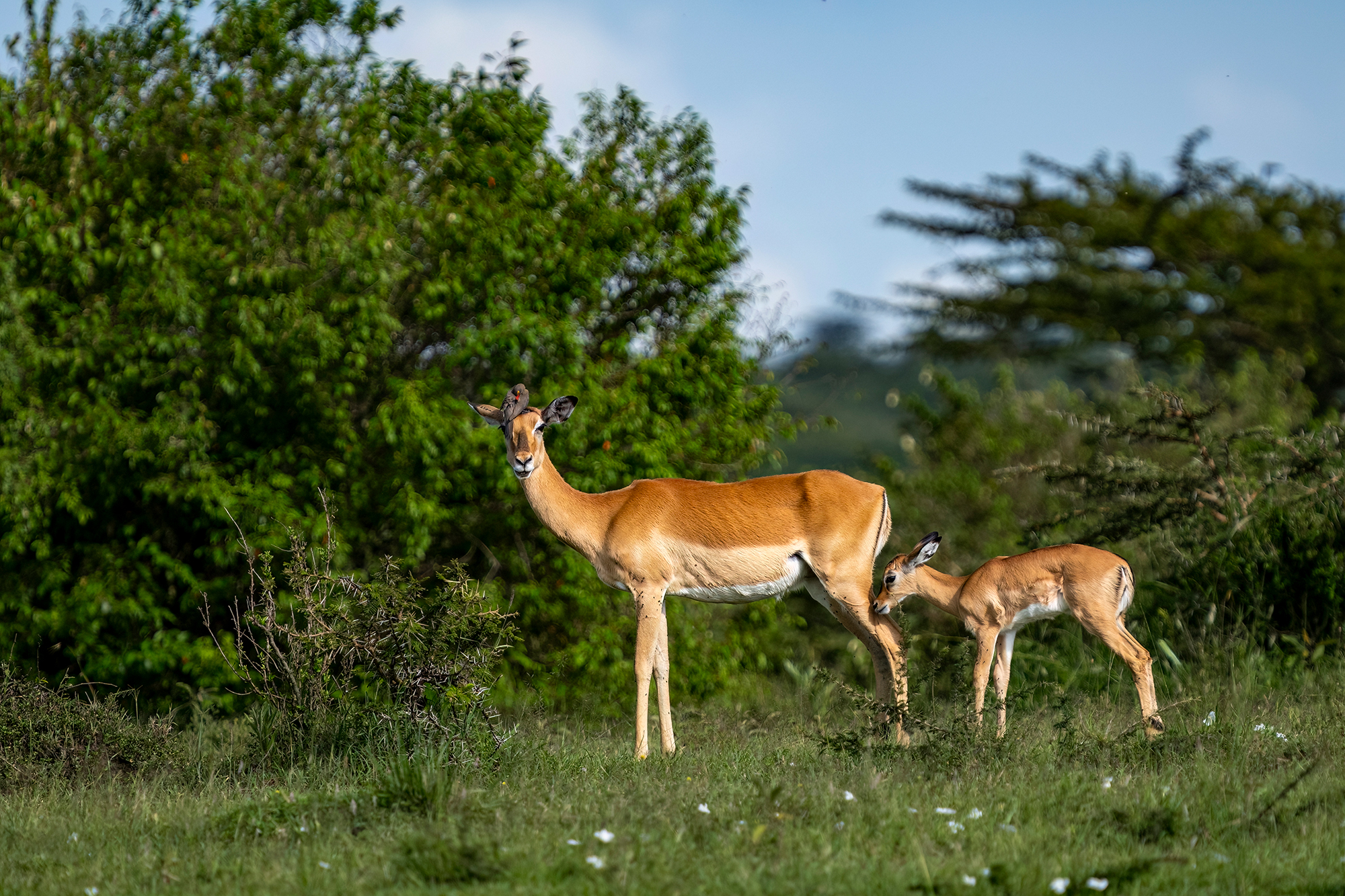
One thing that makes the impala stand out from the other antelopes is their remarkable ability to try and avoid predators. When alarmed they will jump 3 meters (10 feet) into the air and long jump as far as 11 meters (36 feet). That is truly remarkable. When a predator stalks and pounces, the whole herd explodes into different directions. Unlike the other antelopes they are not fast or exhibit endurance running so they really depend on a quick dash to cover to escape hyaenas, leopards, wild dogs and cheetahs. The adults fear the larger carnivores, but the fawns are also vulnerable to martial eagles and pythons.
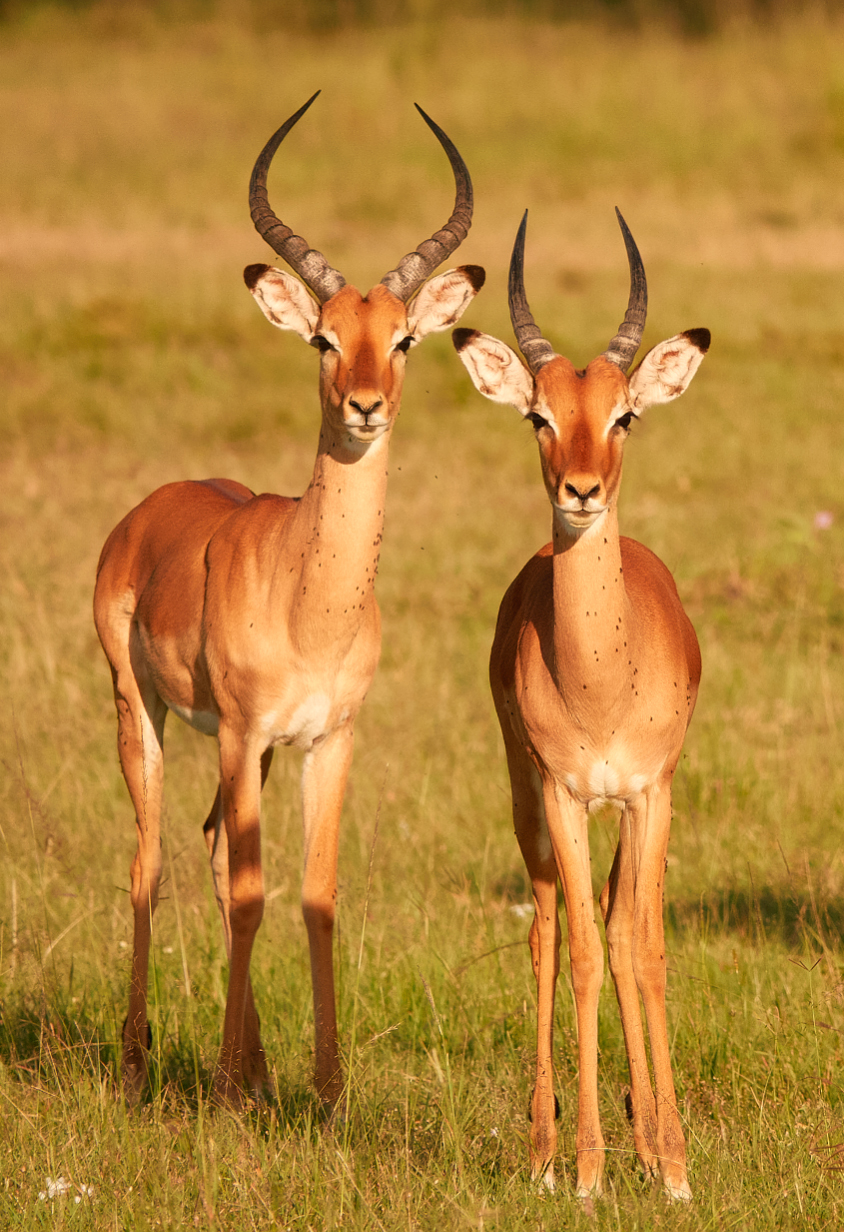
Let us get one thing straight from the start: impala are not gazelles. They may look like a big Thompson gazelle or the larger Grants gazelle, but they aren’t in the same taxonomic tribe, they are distinctly different in their own tribe. Indeed, taxonomy can be interesting and informative since closely related species are often anatomically similar and have similar social structure and behaviors and when we see differences then we ask why did that evolve? When we look at impala, there are just two species in the tribe and the other species is rare and remote, and yet there are more than 70 species of gazelle. Why have the gazelles done so well and yet the impala has but one successful species? I wish I knew, and I spend time thinking about these things.
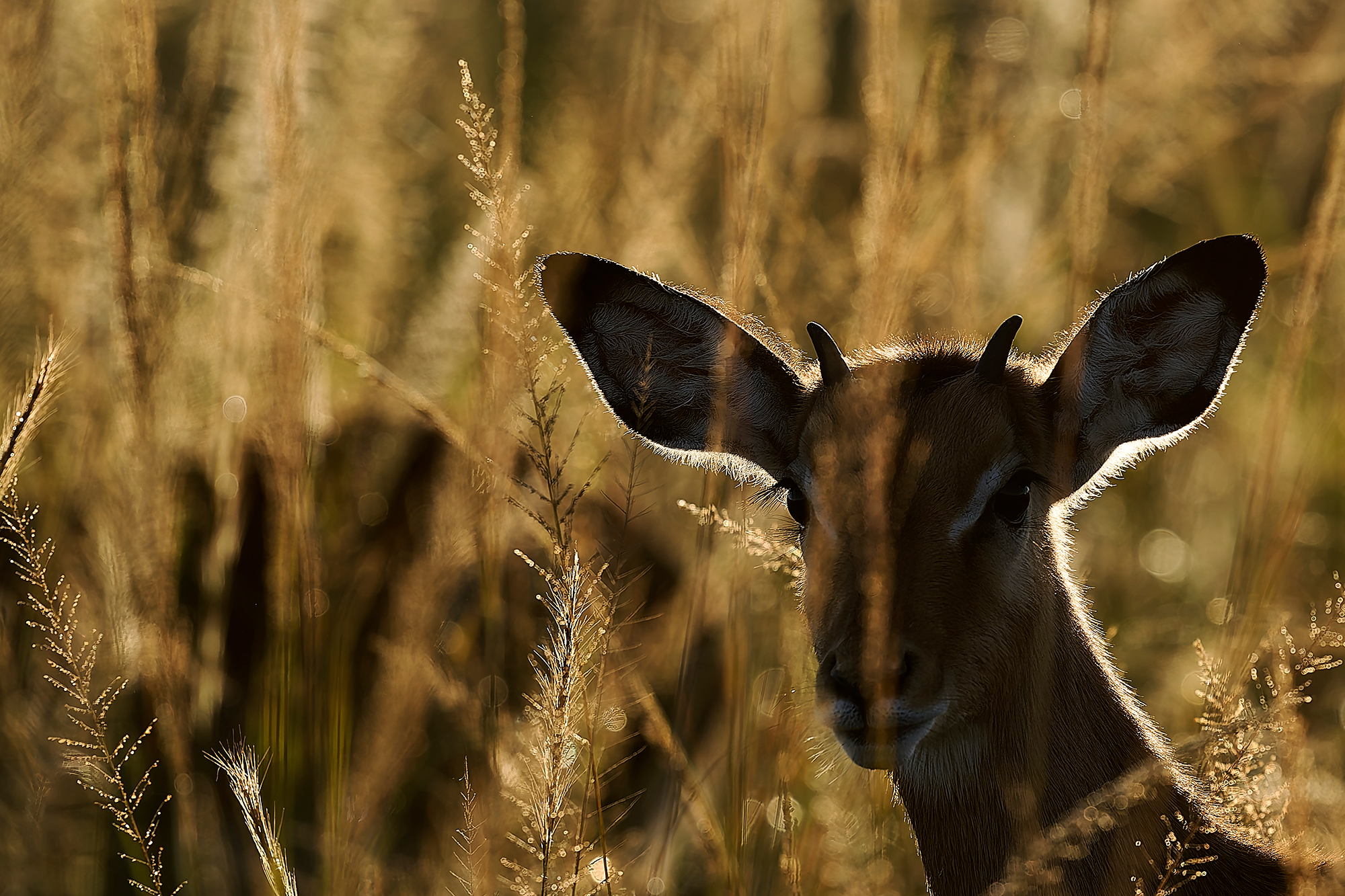
The antelope subfamily includes the animals with transverse rings around their horns and specialized glands in front of their eyes. They come under the taxonomic umbrella of the Bovid family (the cattle) and this also includes goats and sheep, all of which are characterized with unbranched horns that are not shed. That in itself is interesting and tells us that the horns grow throughout life, so the older males develop impressive larger horns. Female impalas do not have horns unlike the female gazelles that often have relatively small horns. These bovids are part of a group which includes all the even hooved animals, and these are special since they digest plant material in one or more specialized stomach chambers as opposed to the odd-toed herbivores like zebras, hippos and rhinos that do much of their digestion in their hind gut. This specialized foregut means that they seek the high-quality vegetation so tend to be selective foragers and grazers and will even take seedpods when grasses are dry and dead. As a zoologist I am always careful to make sure I know who is related to whom since it really helps my biological understanding, and this understanding not only increases my pleasure and ability to try and get interesting photographs.
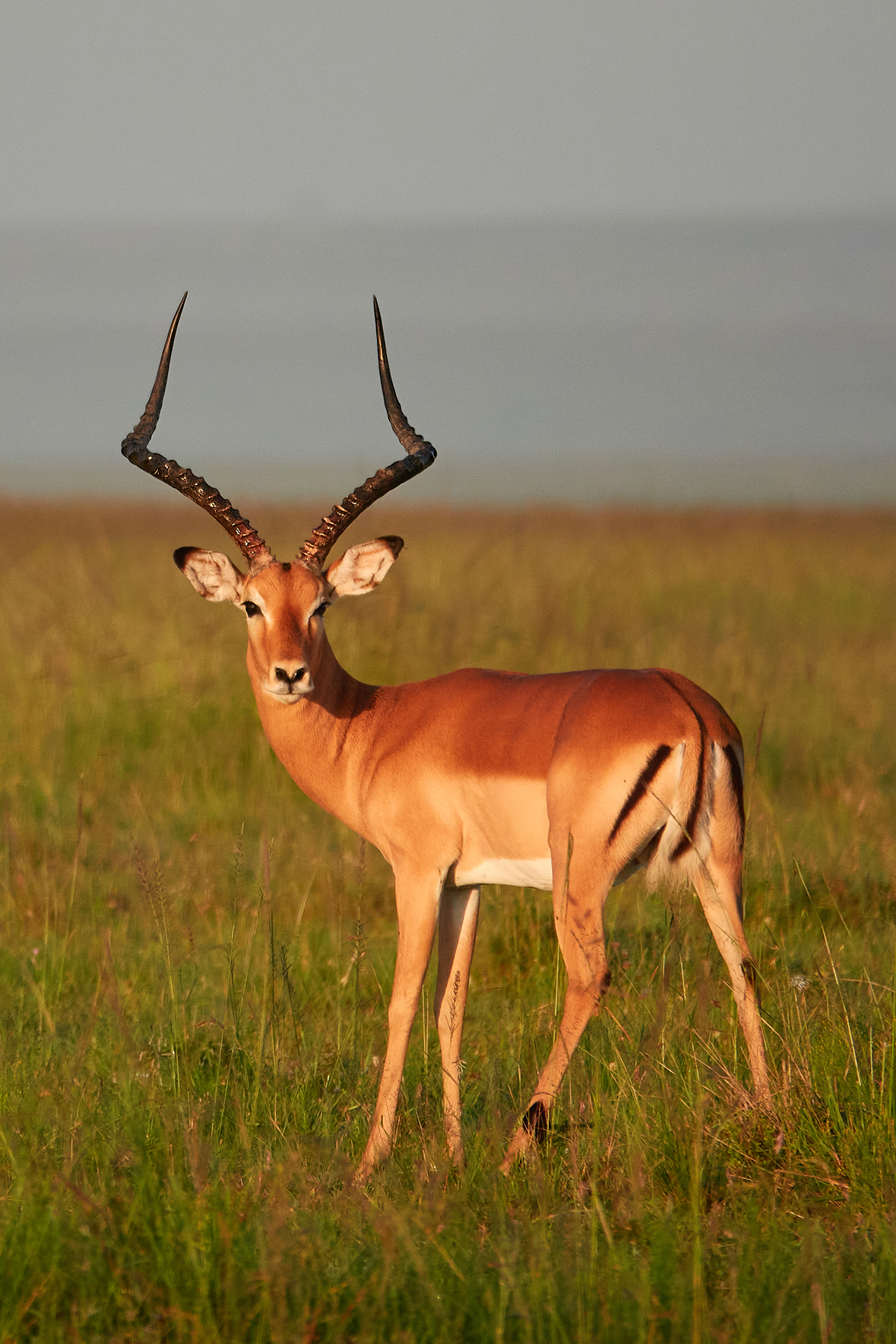
I think understanding the social structure of impala helps your photography since then I understand the interactions that I see and can predict what might happen and so catch some cool photographs. Impala males defend territories that include a group of 6-20 females, but it can be more and including the young the herd can be as big as 50-100 individuals. The territorial males have access to the females by defending his harem in a geographically defined territory and consequently the competition for females can be intense. They defend an area to keep other males away from their females and this includes both the neighboring territorial males and the non-territorial bachelor males that hang out in their own herds. The territorial males are kept very busy chasing off other males, keeping his harem from wandering off and checking the females to see when they come into oestrus and then chasing her and mating with her. With all this defense and mating, the time he spends eating and ruminating is reduced by about a third and so these males rapidly become weaker and eventually ejected by the senior male from the bachelor herd. The turnover in dominant males can be rapid so the males may only be defending their harem for 3 months. Once the male is ousted from his territory he is rejected by the bachelor group who do not want to see him back again so these males must live alone and so have reduced vigilance and often become food for a passing predator. Some of these males do get their strength and vigor back and may win back their harem for a period to be ousted again at a later date.

The territorial males push out any weaned males from the harem and they disperse away and join a bachelor herd, starting at the bottom of the pecking order. As they age, so they progress up the male hierarchy until they are fully grown and at the top of the bachelor herd, ready to (about four years of age) challenge the territorial owner. Approximately 30% of the adult males become dominant territorial males for at least a short period but during the dry season, the females can lose condition and the territorial system collapses.
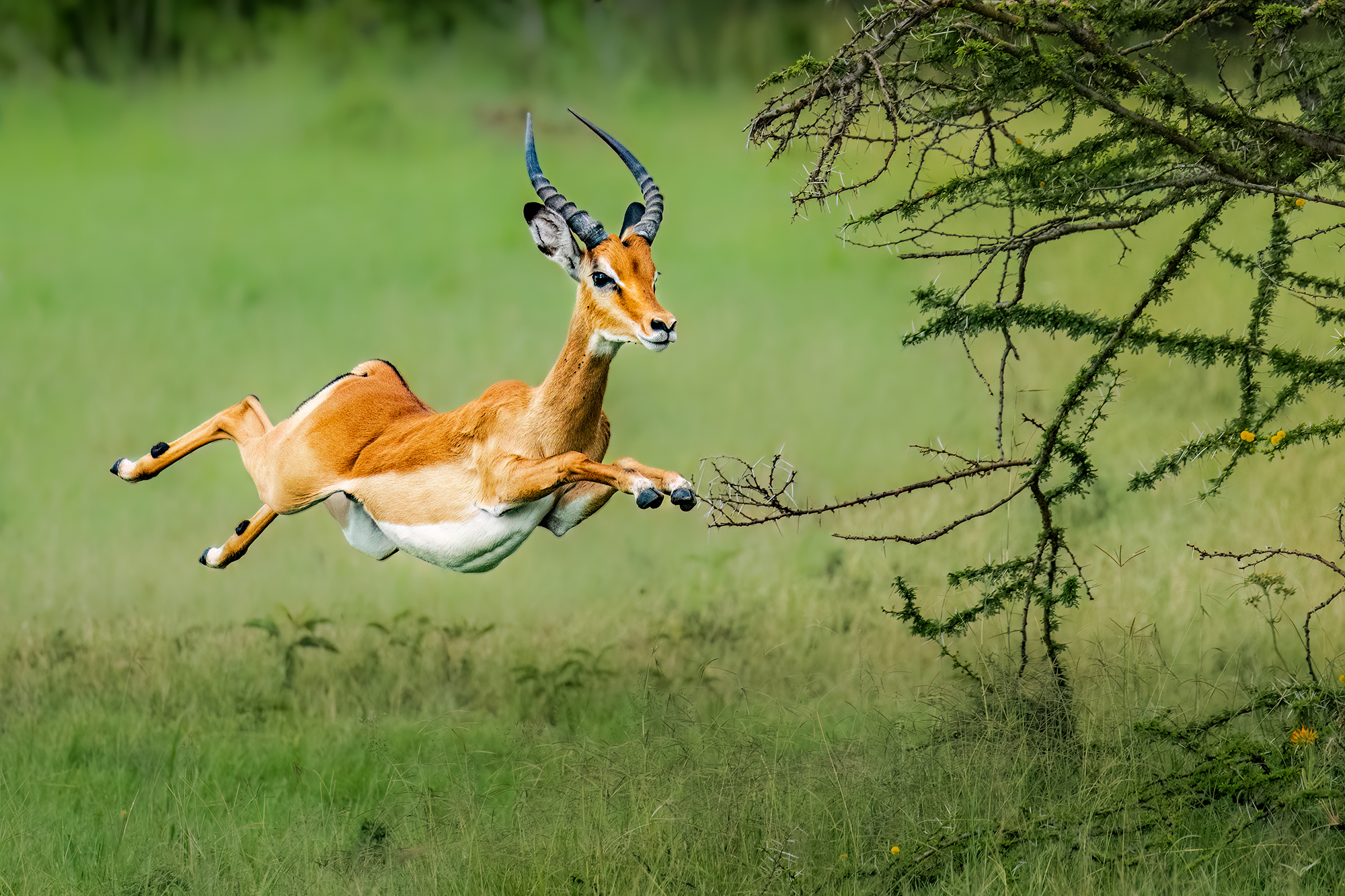
While the temptation is to focus your photography on the battling males in the bachelor herds and the stressful life of the territorial male, the females are not only elegance personified but also wonderful to watch as they interact with each other and their offspring.
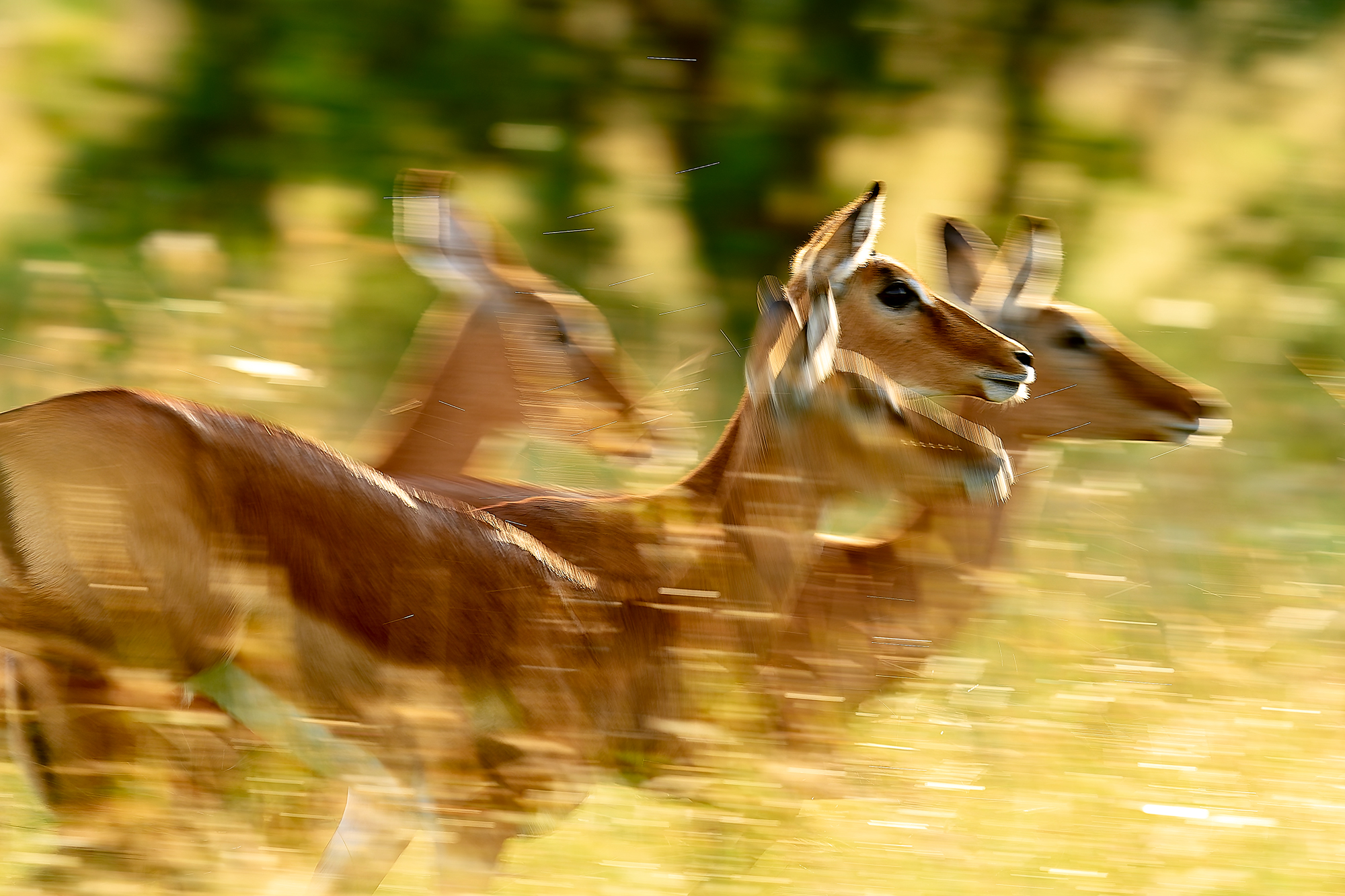
A detailed study undertaken in Zimbabwe found that females live in clans for life, the young females joining their mother’s clan and these form stable units where the individuals not only know each other well but are also closely related. Rarely do females switch clans. This is in contrast to the males which disperse away from their natal herd and may switch between bachelor groups in an attempt to find opportunities for securing a territory. The females exhibit no hierarchy, little aggression (unlike deer) and work together with vigilance and knowledge of their home range to avoid being caught by a predator. My casual observations make me think that there are often subgroups with strong bonds between females that may well be associated with mother-daughter and between cousins and others raised together.
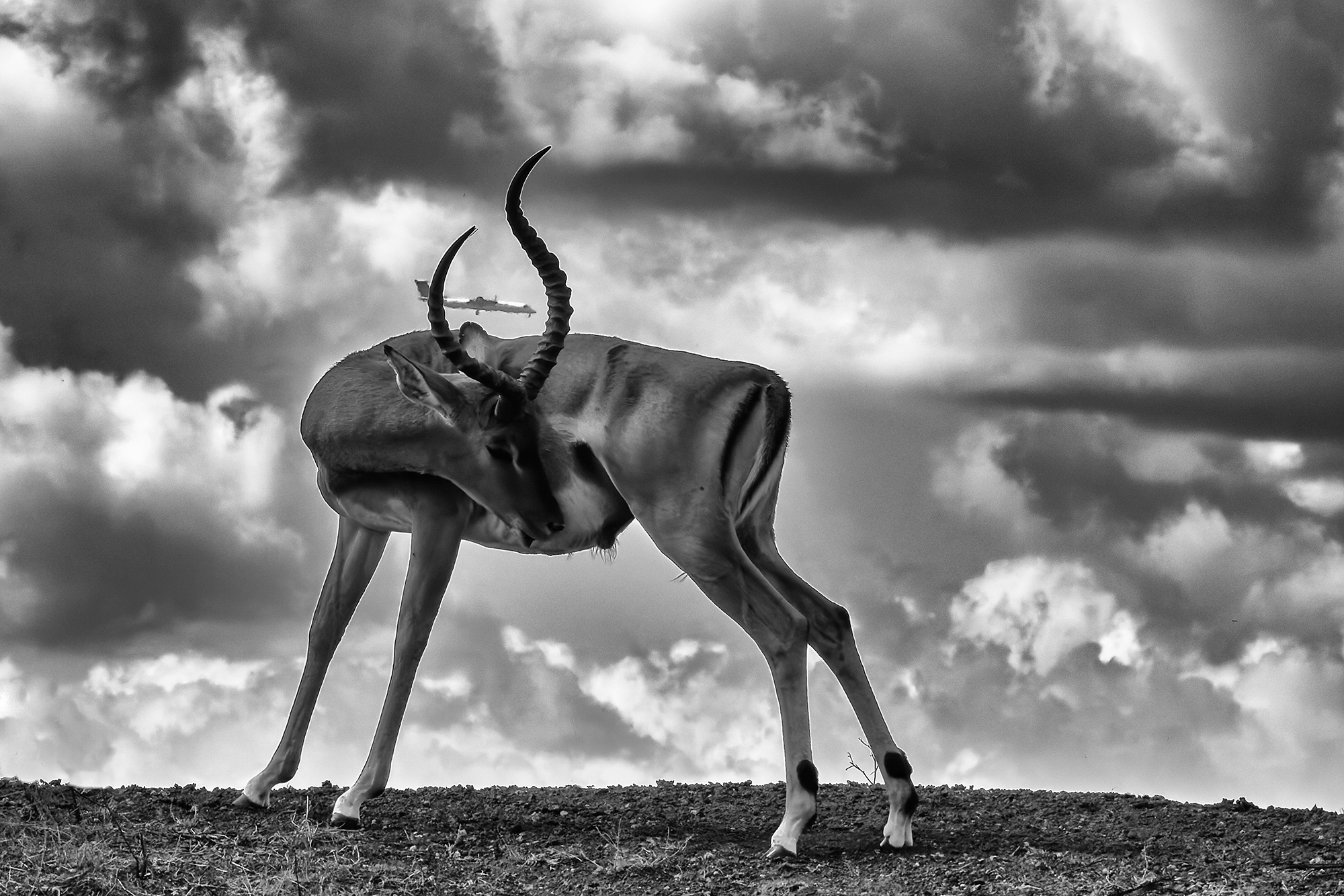
Females can conceive when 1.5 years of age and in the Masai Mara with the extended rainy period their breeding season is often extended. While the clan is the safe space for the females, the pregnant female will move away from the clan and find a place to give birth. When the fawn impala is walking well and can keep up with the herd she will bring it back to the herd when just a couple of days old. Here they associate with other newly born fawns and form into creches, play with each other but also seek protection and milk from their mother.
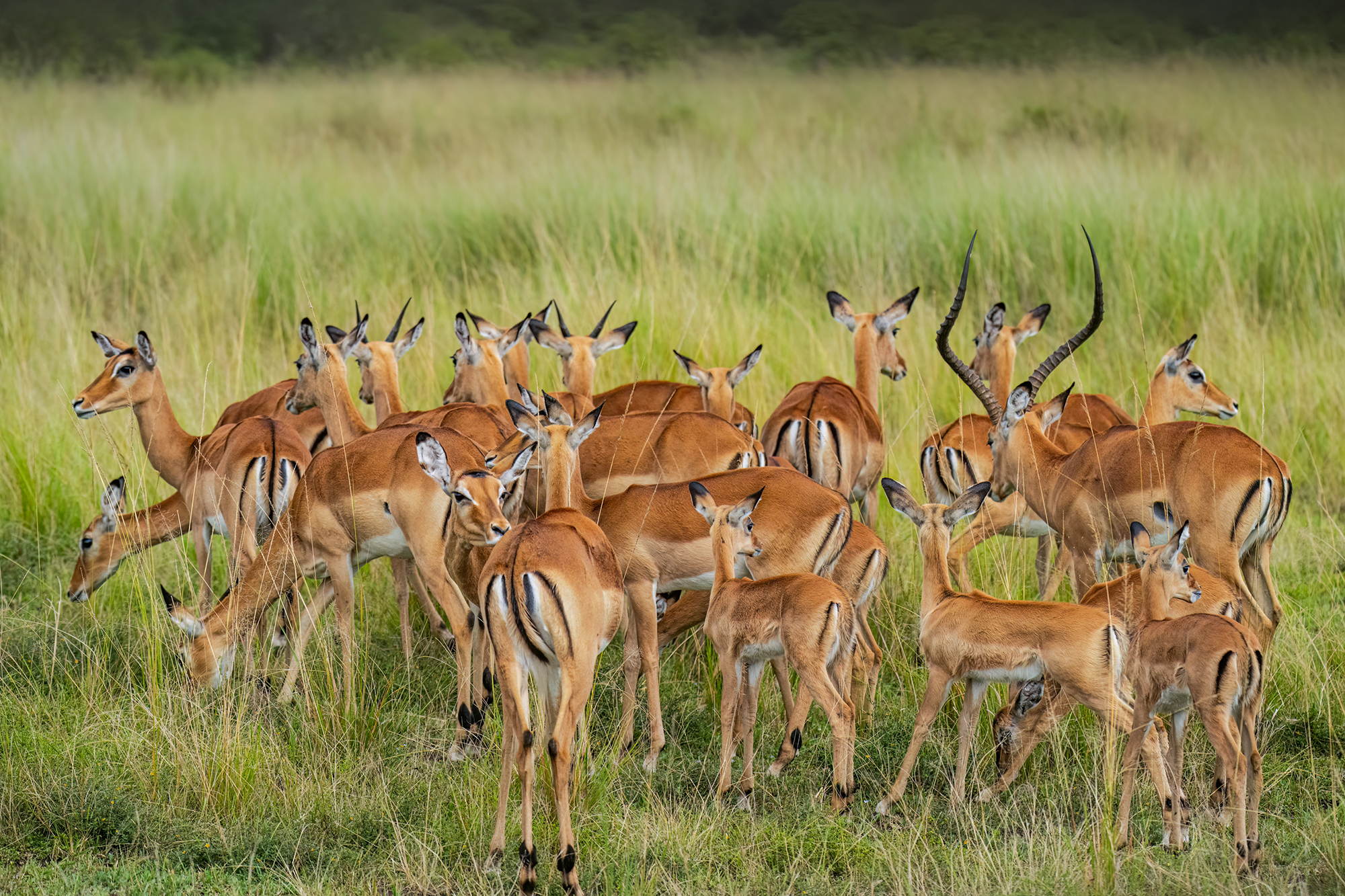
Unlike gazelles, impala have a very distinct scent gland above the hoof of the hind legs, which appears as a dark patch of fur and is known as the metatarsal gland. Unlike other glands, they don’t change in size between seasons and the size does not vary between males and females. The function of this gland is not known although the suggestion is that it must be something to do with social communication and presumably social cohesion. The primary hypothesis is that after the animals have been scared by a predator then they use this to regroup rapidly. I’m doubtful about this, it just doesn’t sound right to me and why don’t all antelope have this gland? On the other hand, they could be important in providing a personal signature so you may know where specific members of your subclan can be located, but I can’t see why this would be still important to the males.
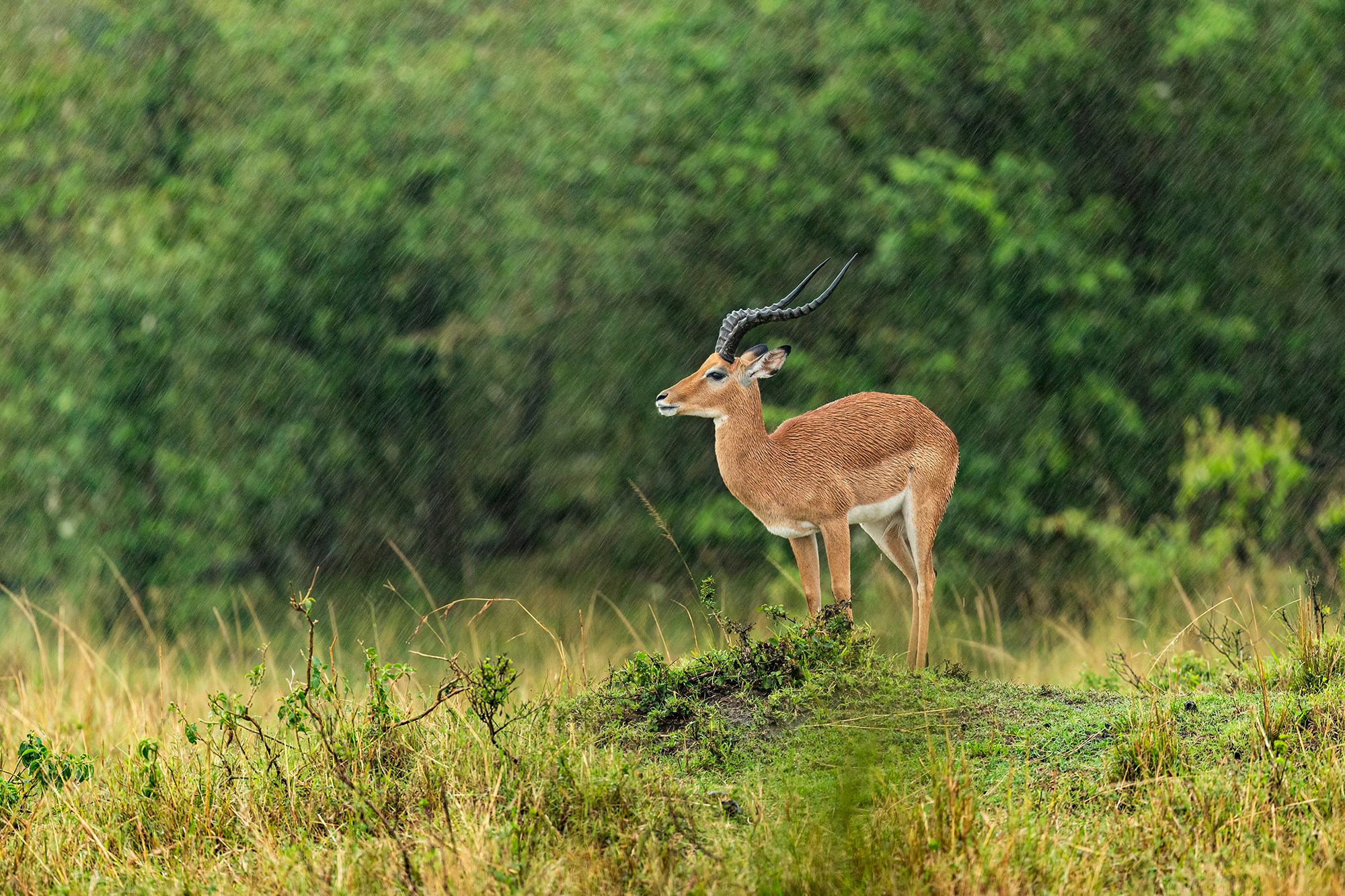
Since both males and females have glands of the same size, it is unlikely the glands have anything to do with territorial marking. Some deer, like white-tailed deer have similar glands and these are larger in northern subspecies and it is thought to help with thermoregulation, acting as a cold sensor. That won’t work for the impala, although I did wonder if the secretions could be a tick repellent, but there is no evidence to support this idea. Of course, the gland may do multiple things in different species, and I think we simply just don’t know the answer to this conundrum.
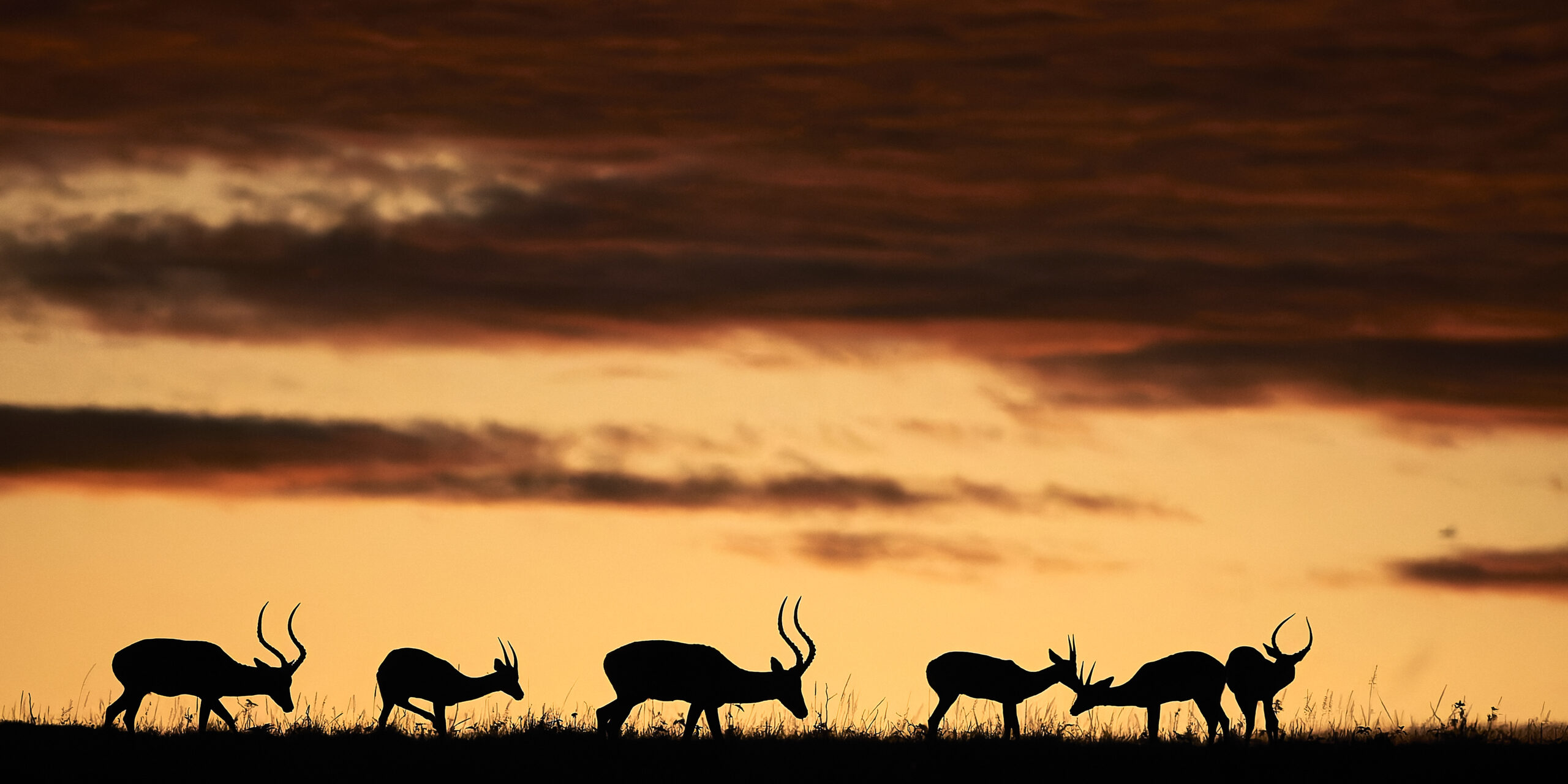
In this article I have tried to give you some insights into the biology and social behavior of these intriguing and graceful animals with their dynamic and exciting social behavior. You can get good photographs in the bachelor herds or in the harems as the males chase each other or chase females. You will see the territorial male curl his lip back when smelling the females in the flehmen response. You can also get some lovely pattern shots of the herd, interactions between the females and the behavior of the fawns in the creche. So much going on, so slow down and watch the impala herds next time you get an opportunity in Africa.
